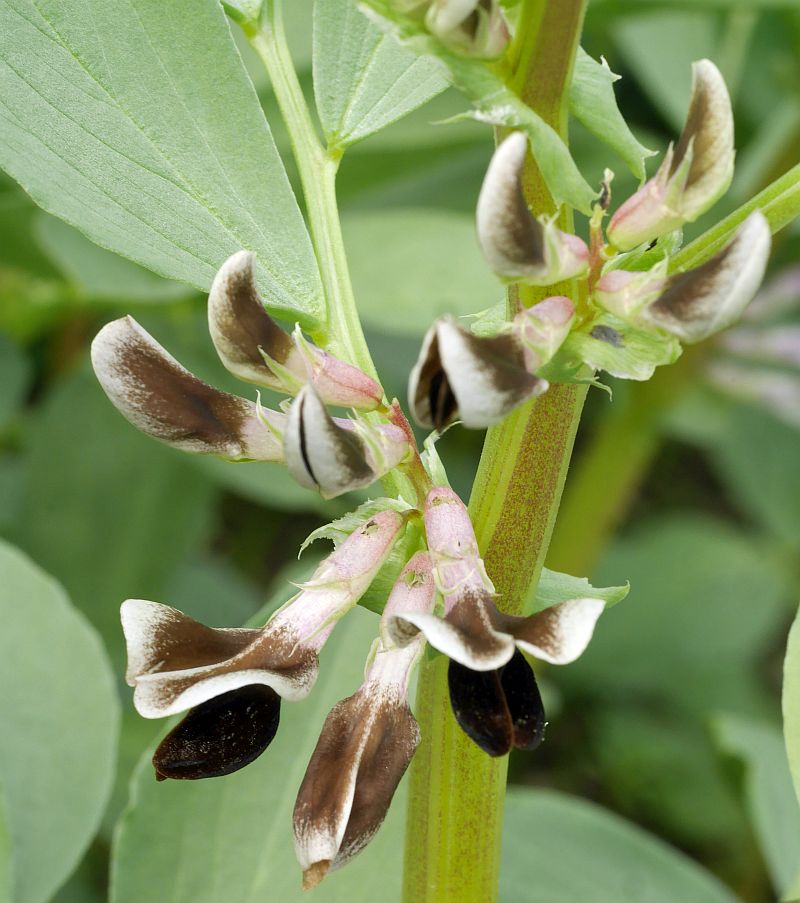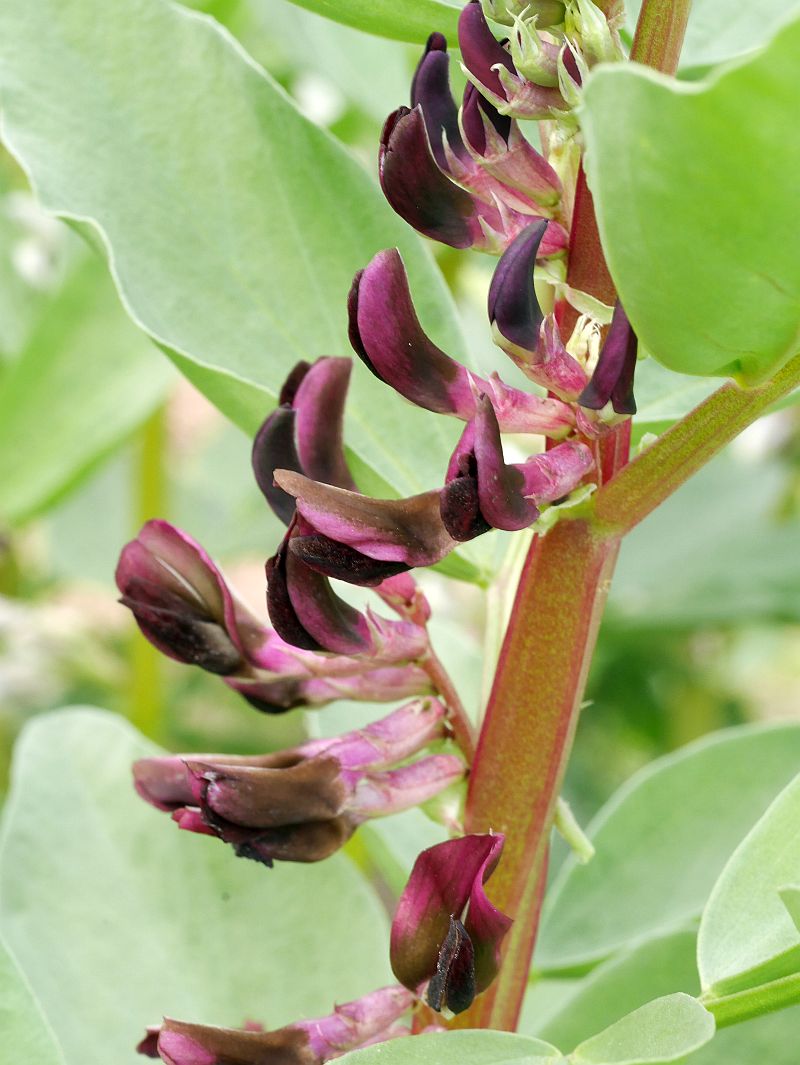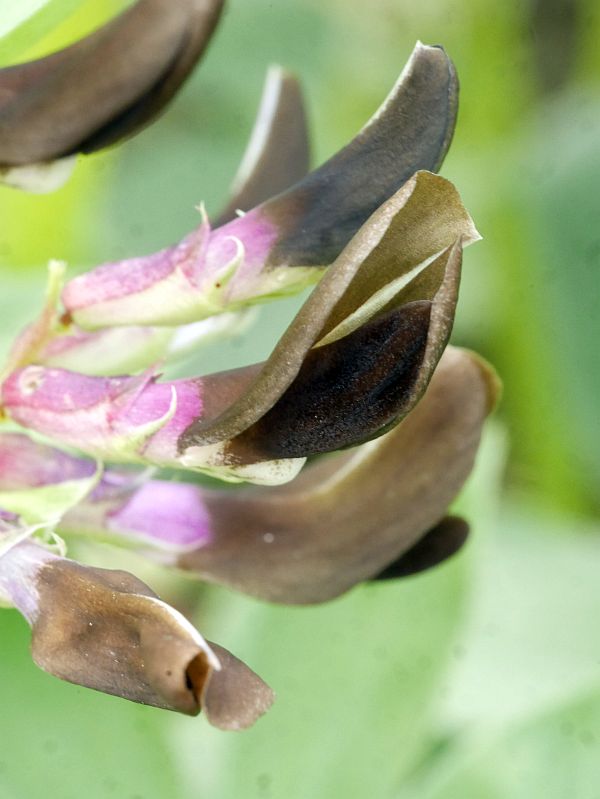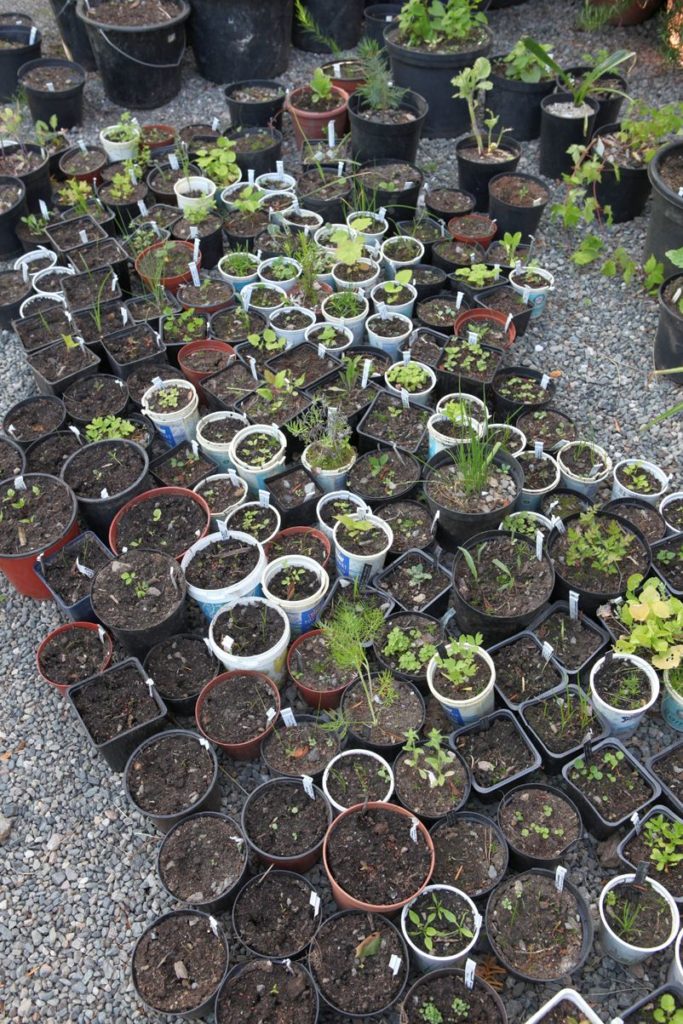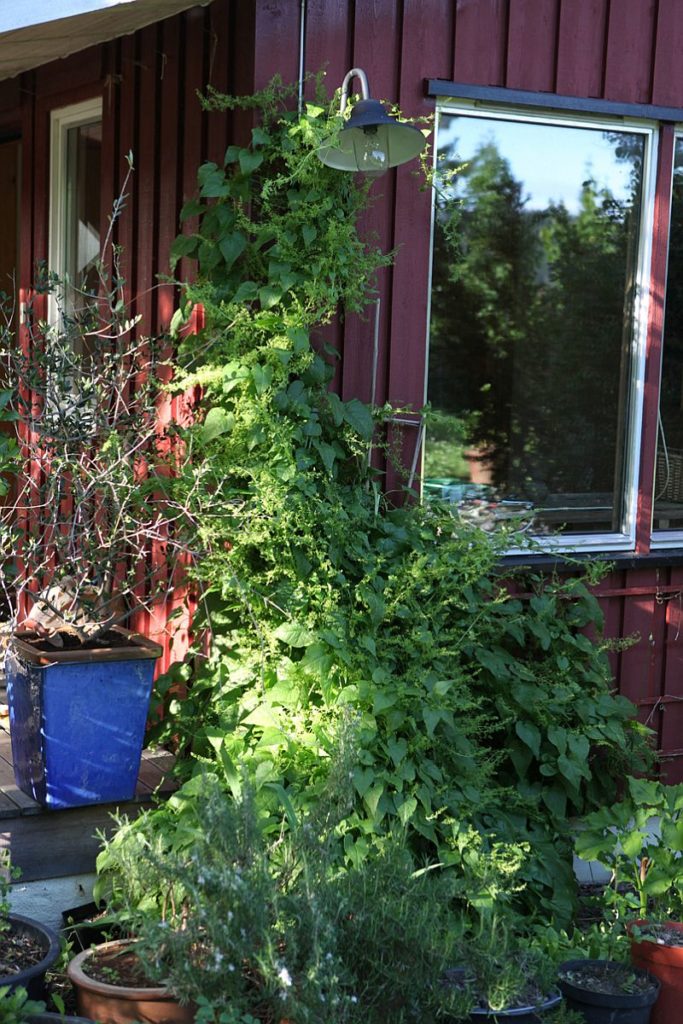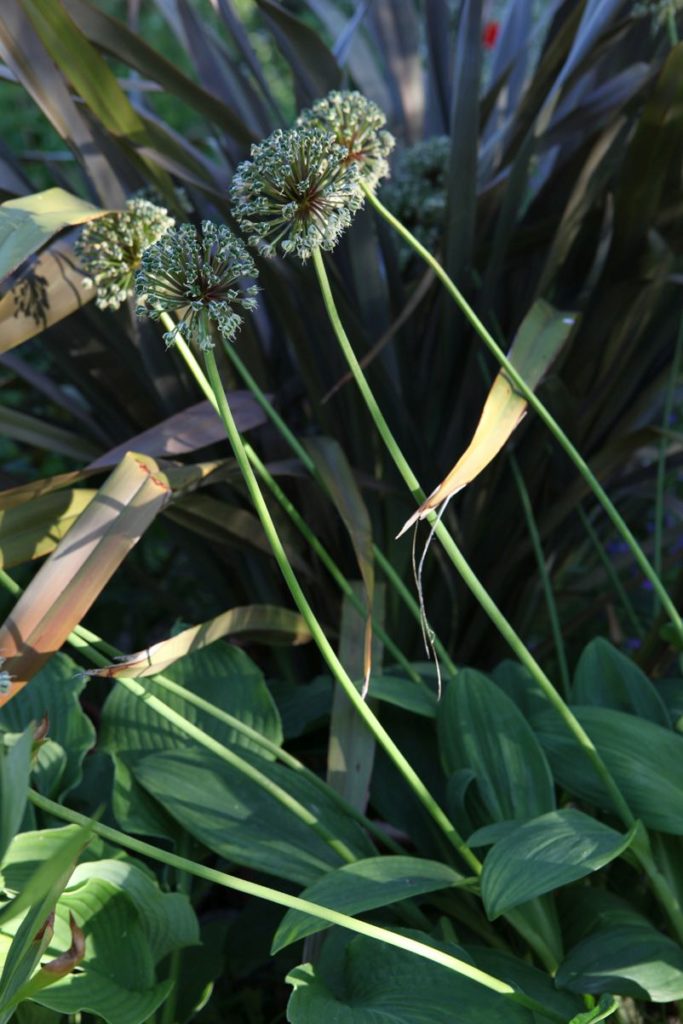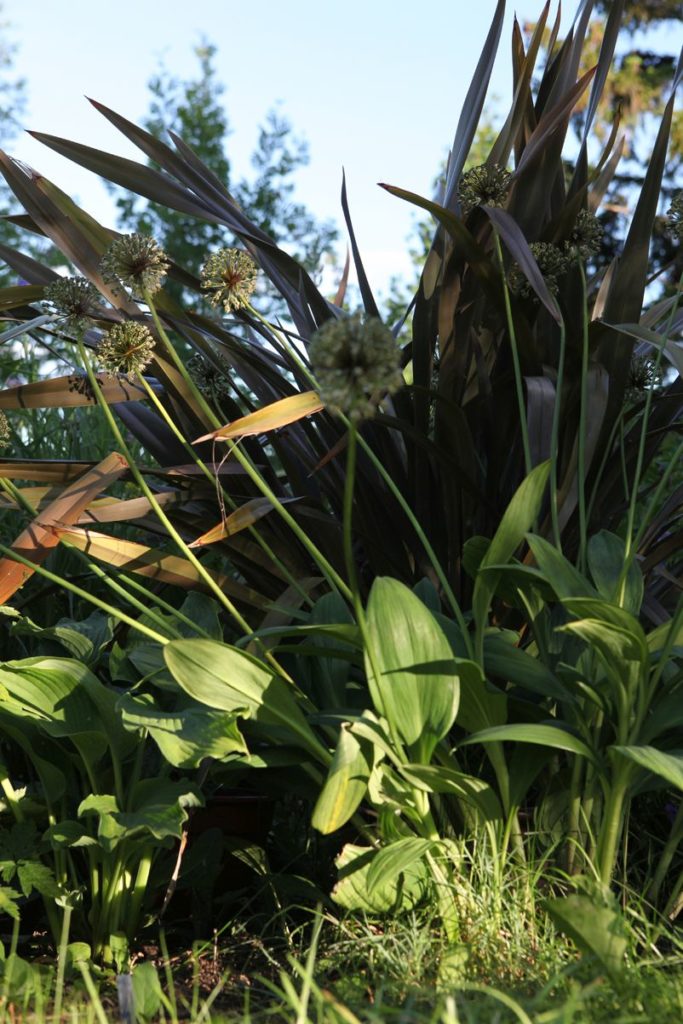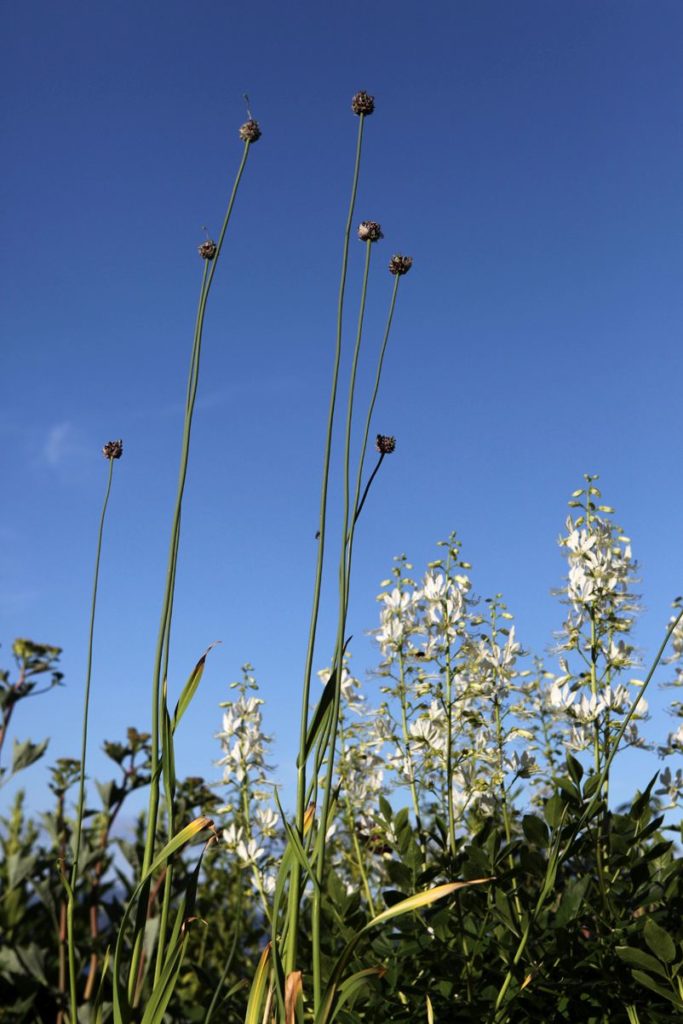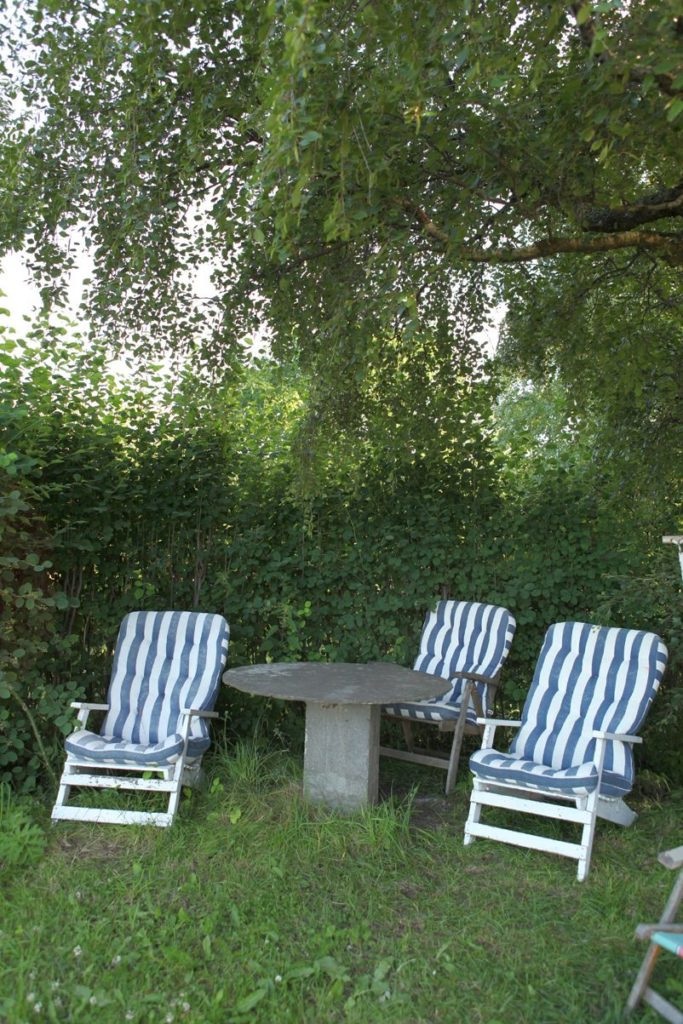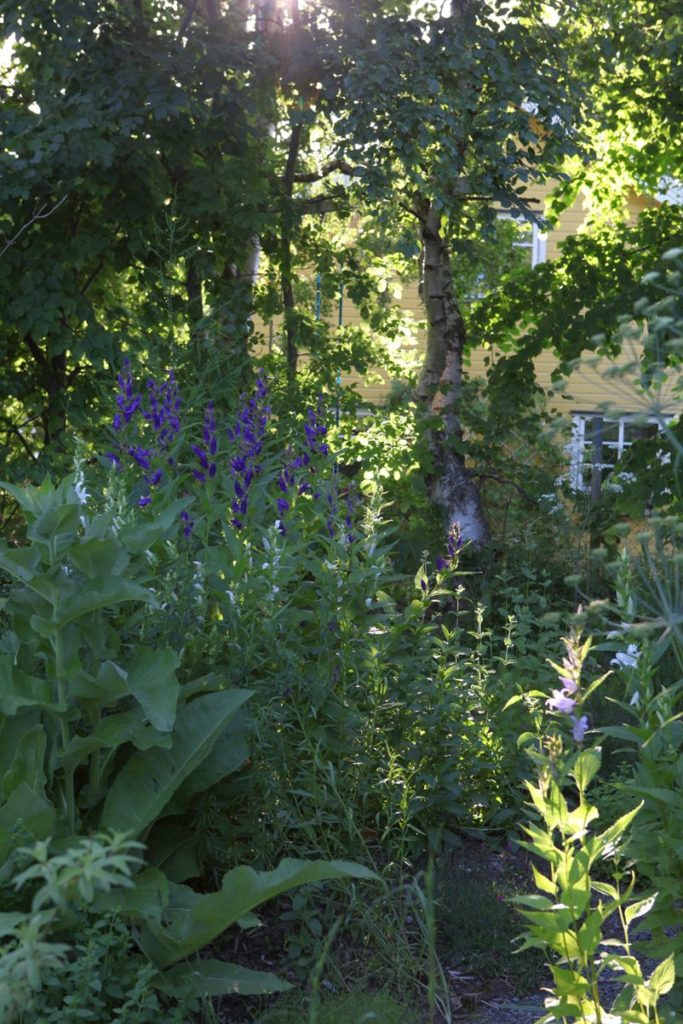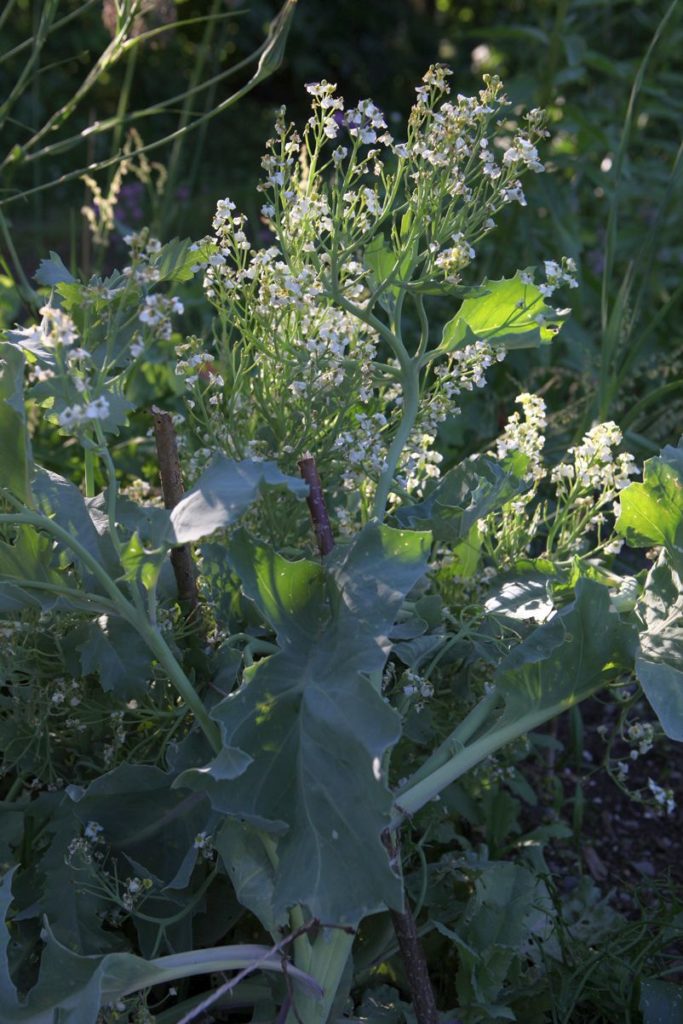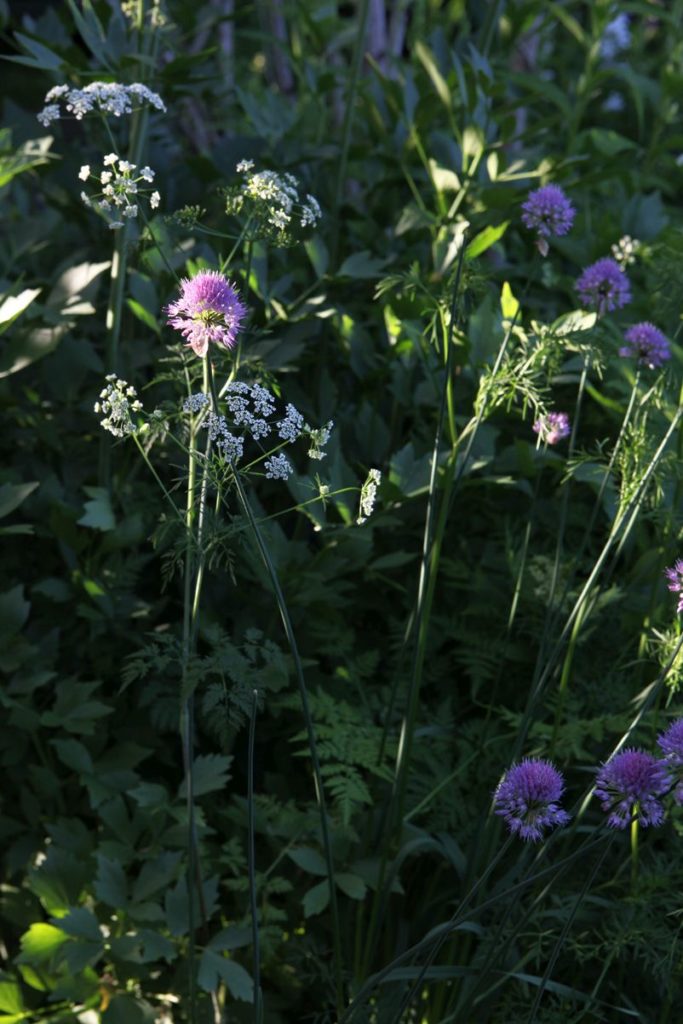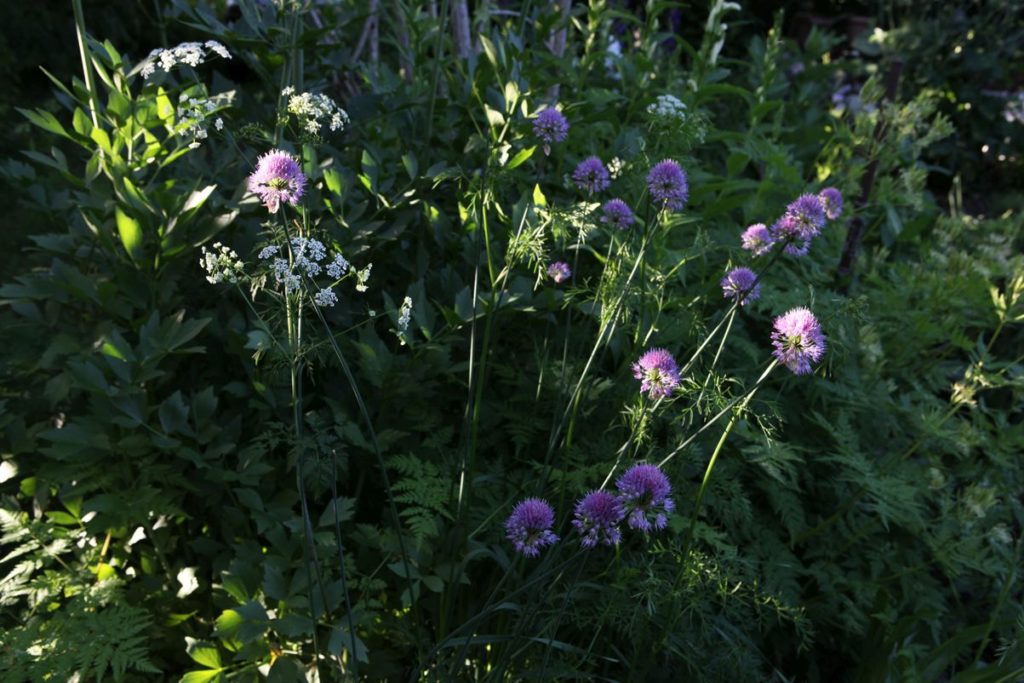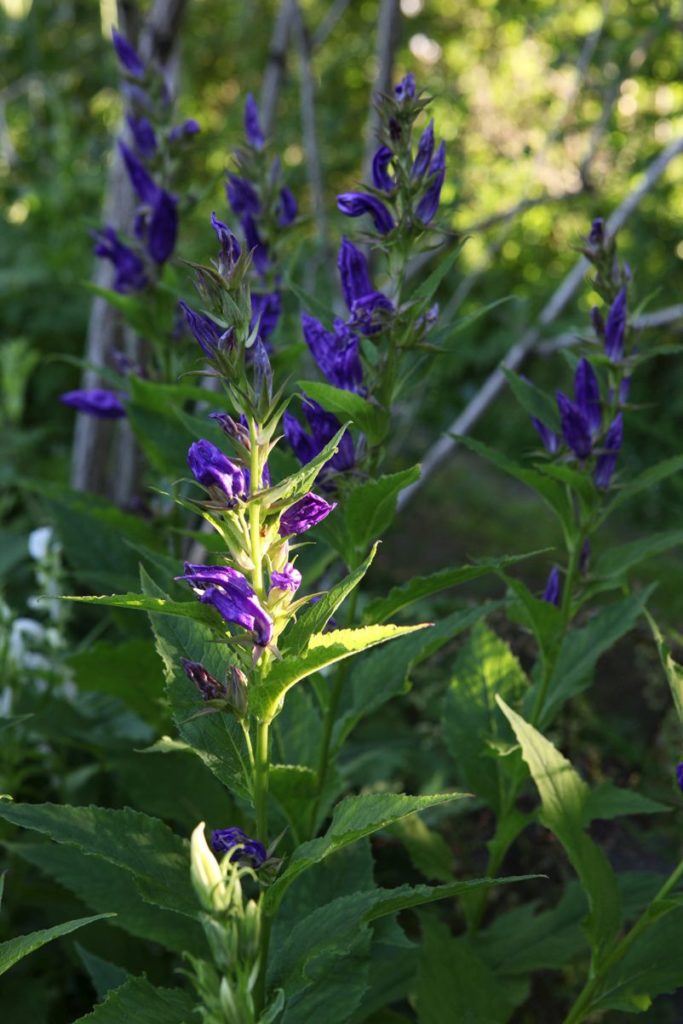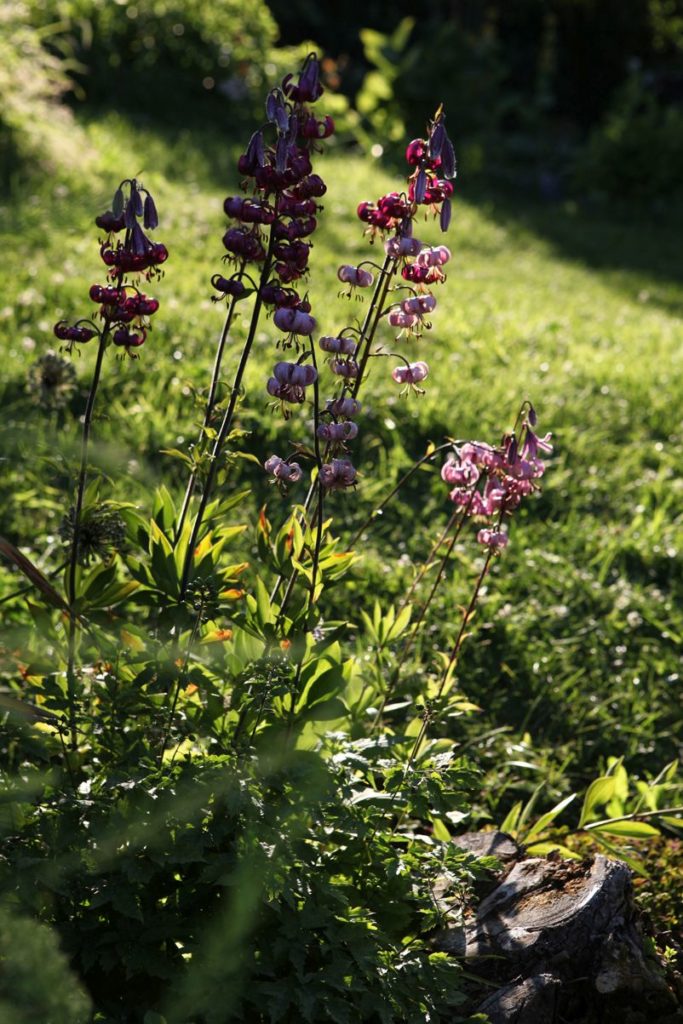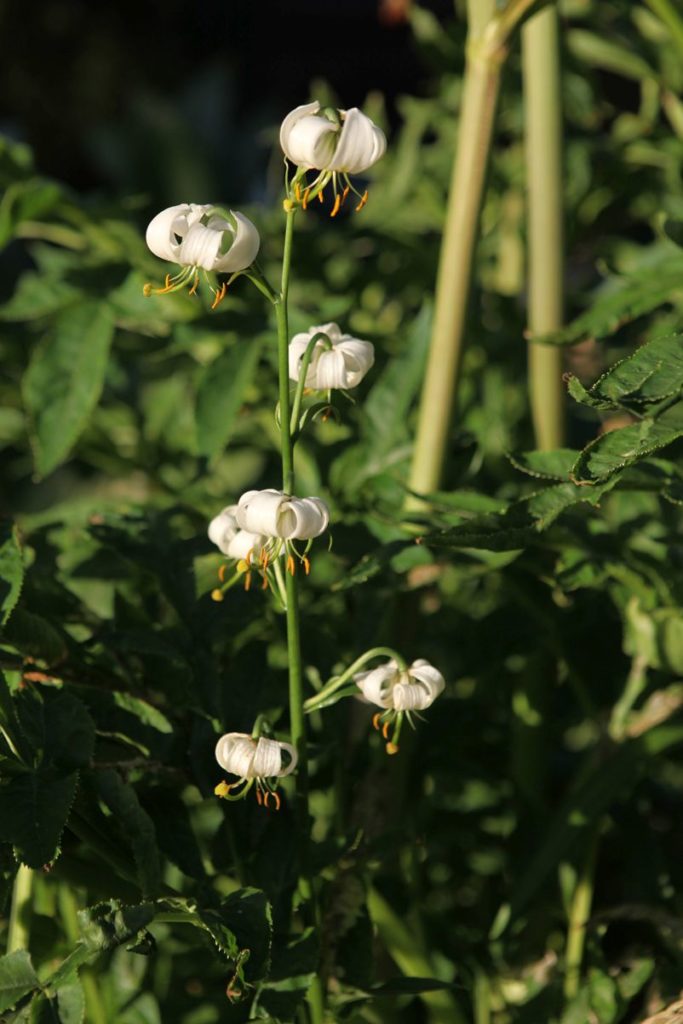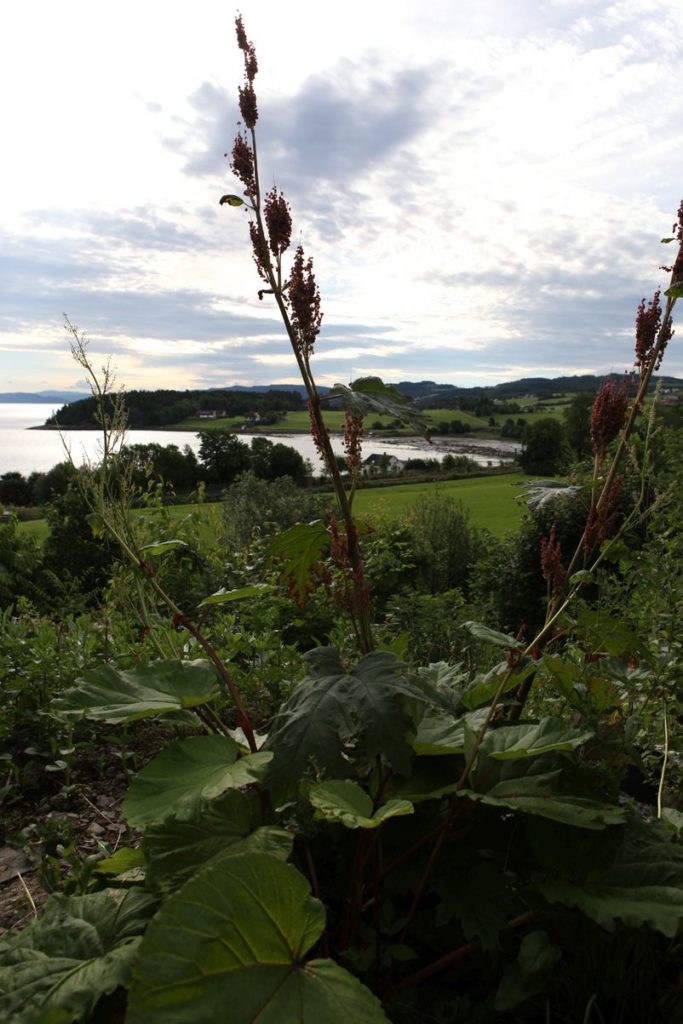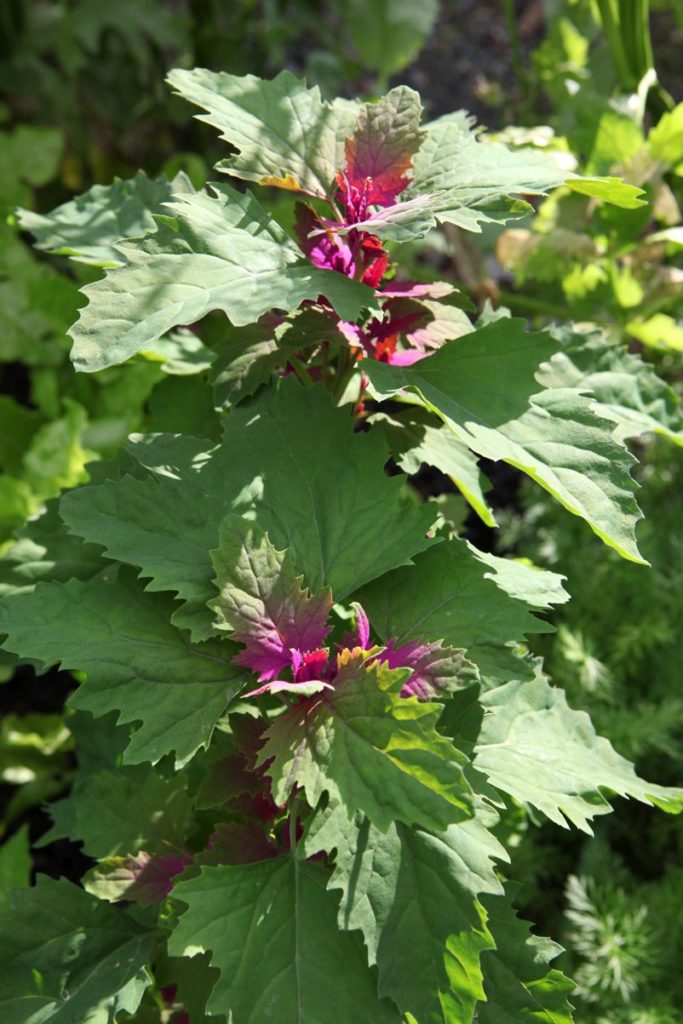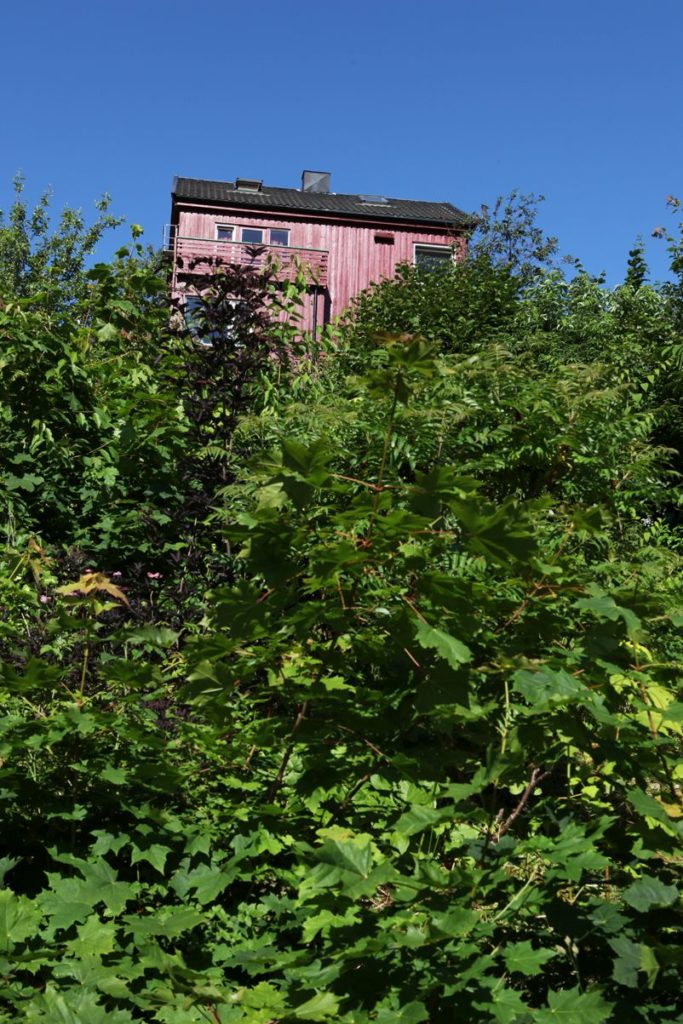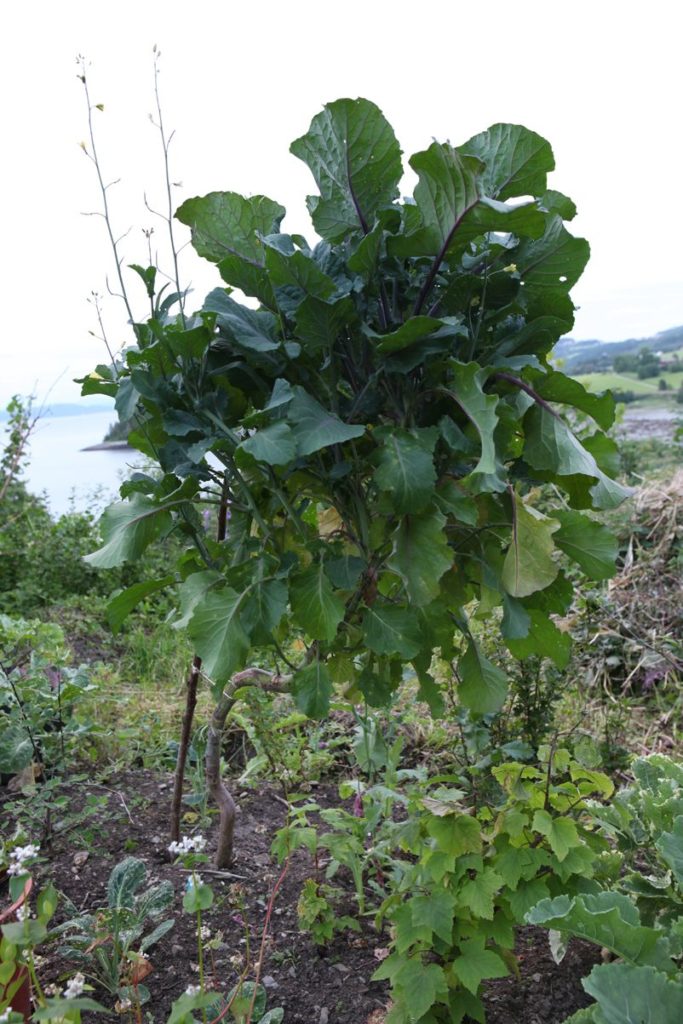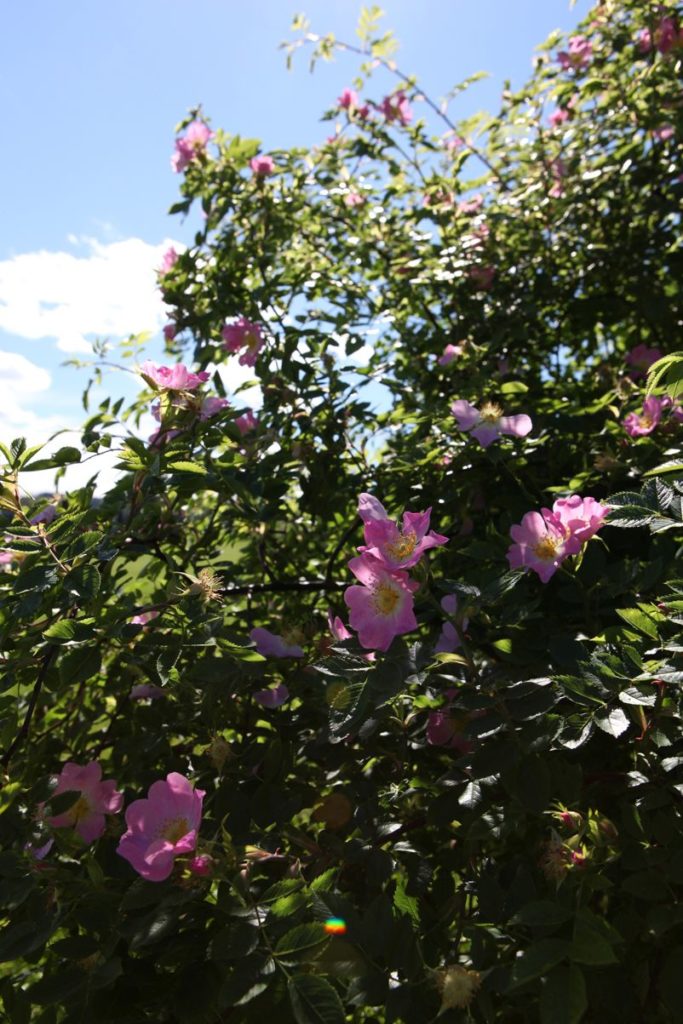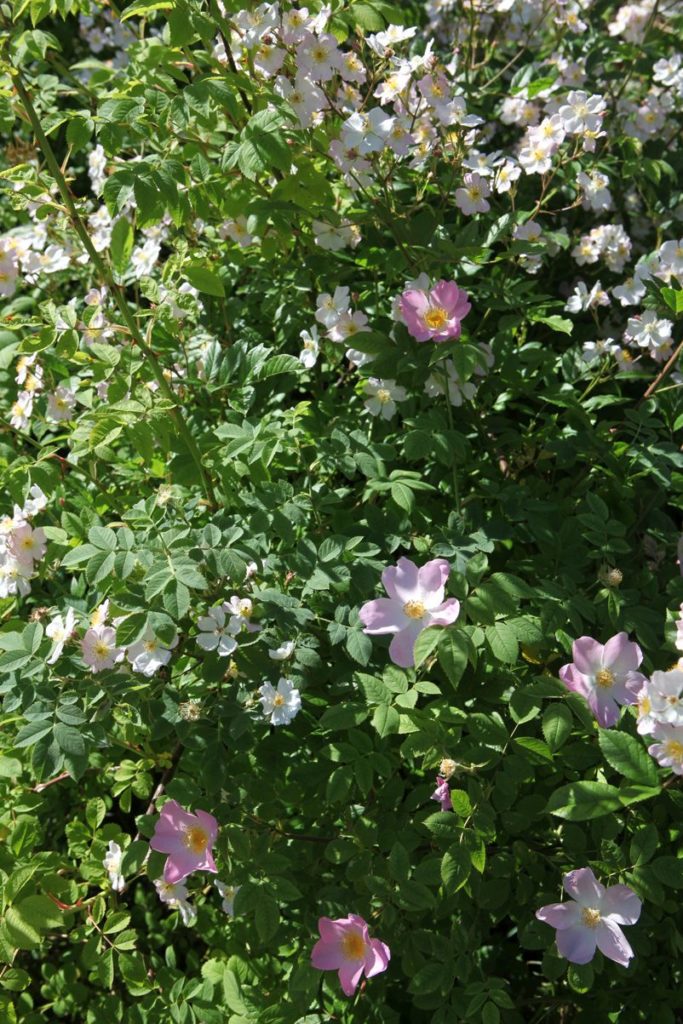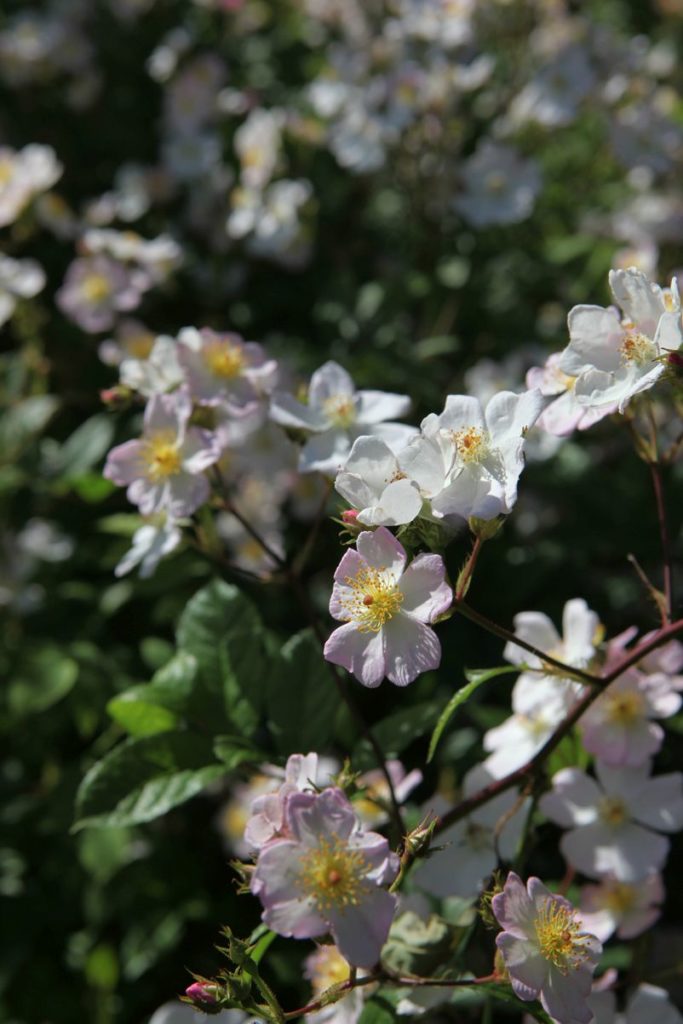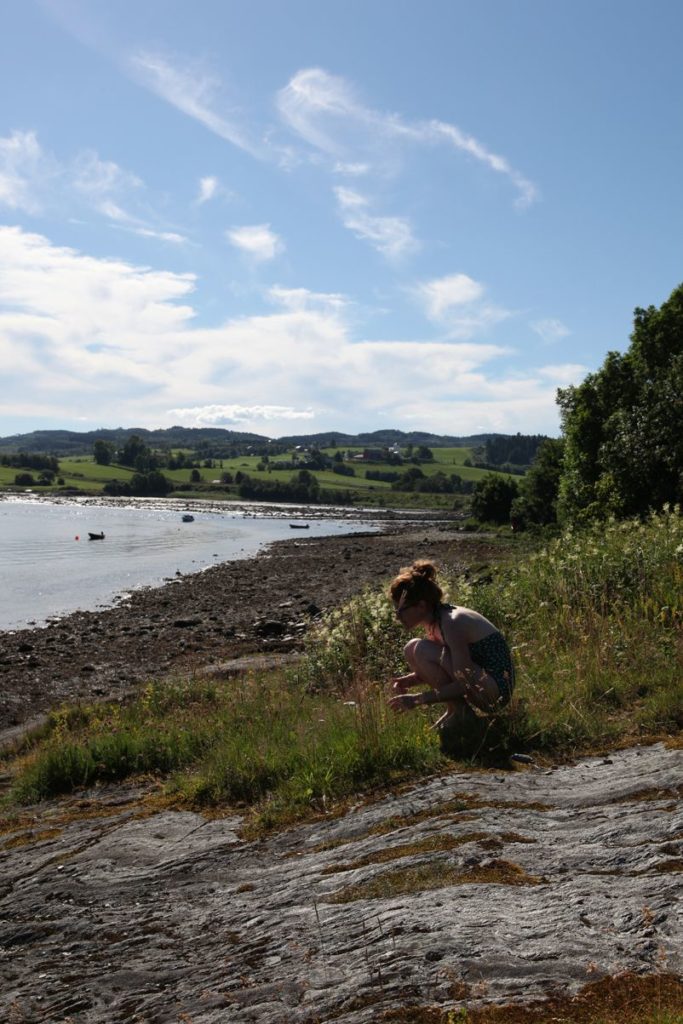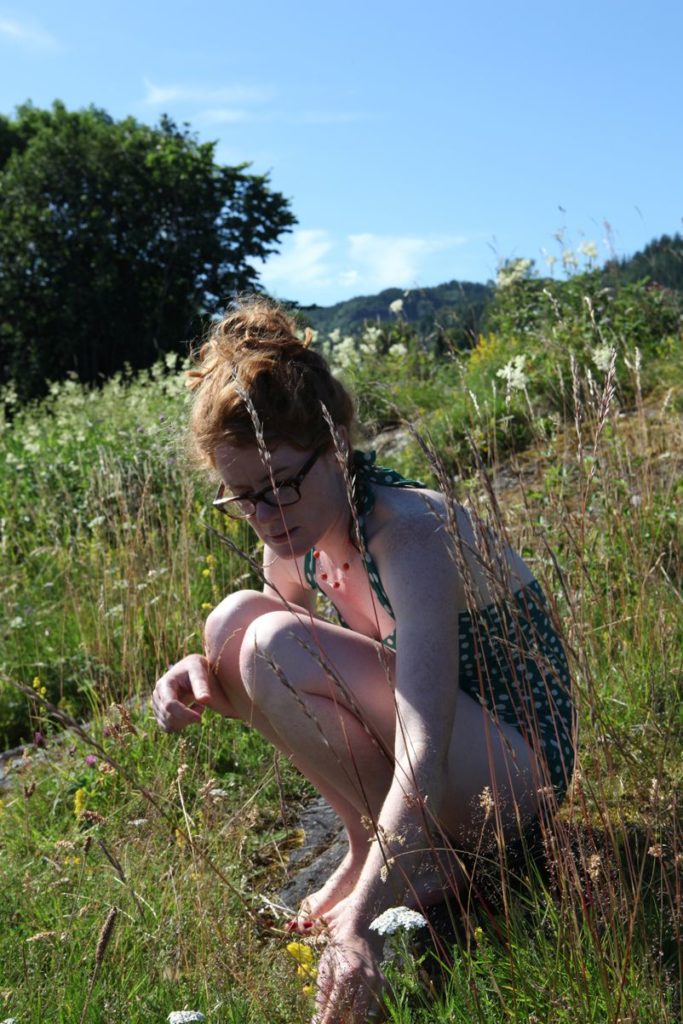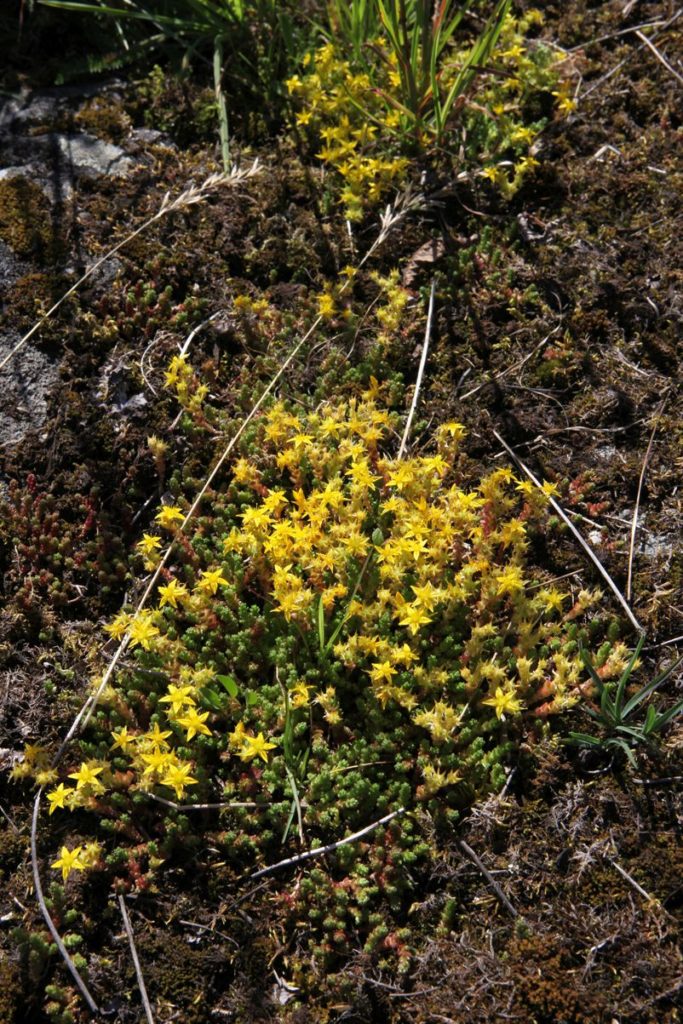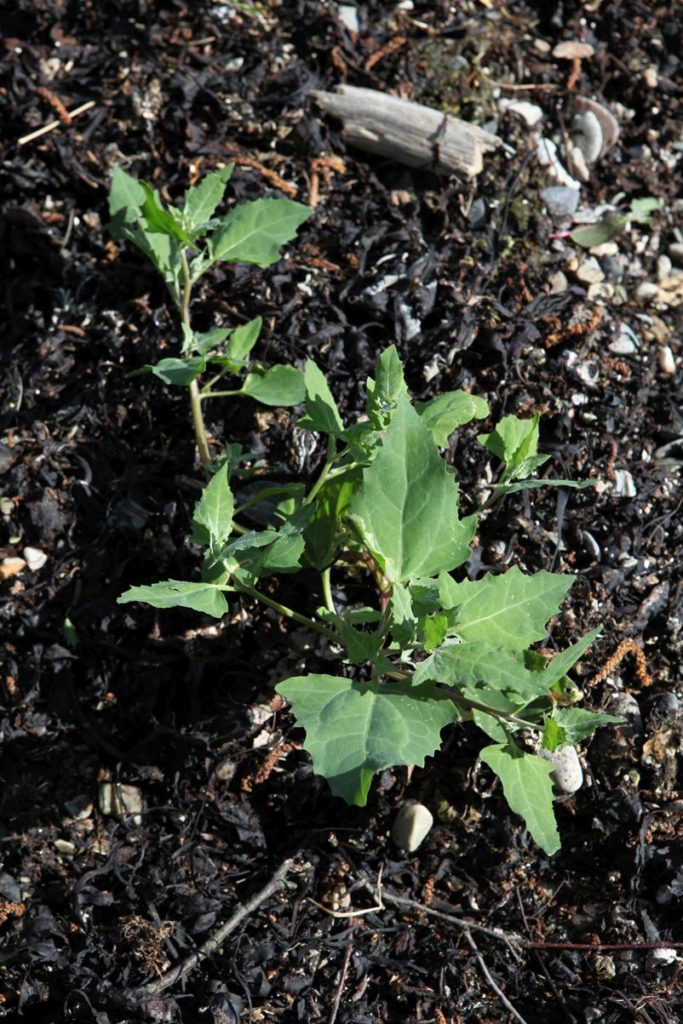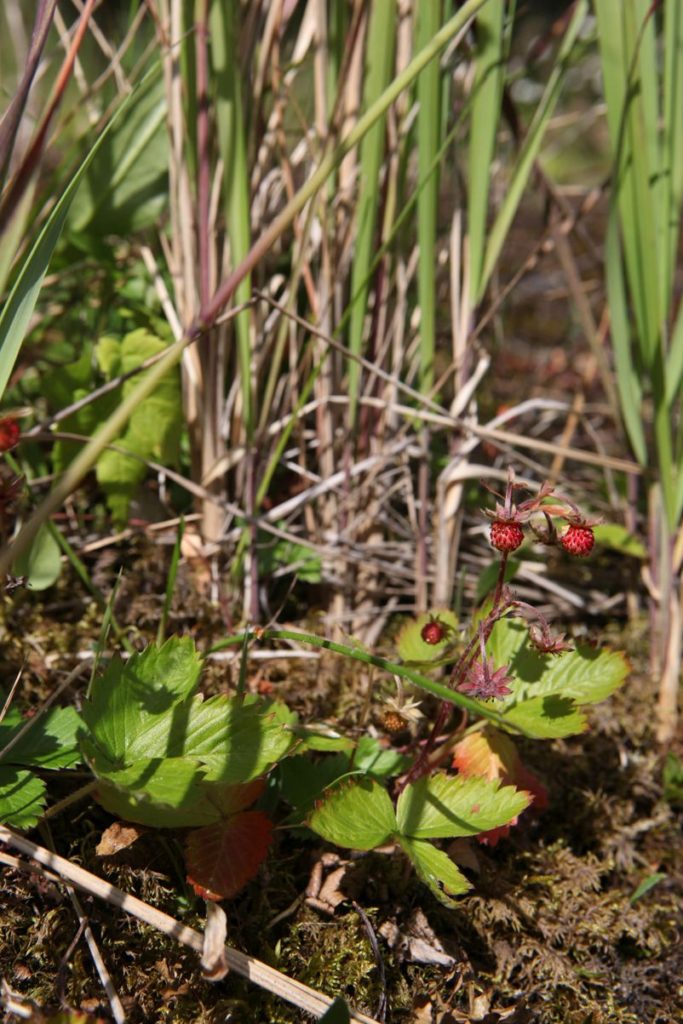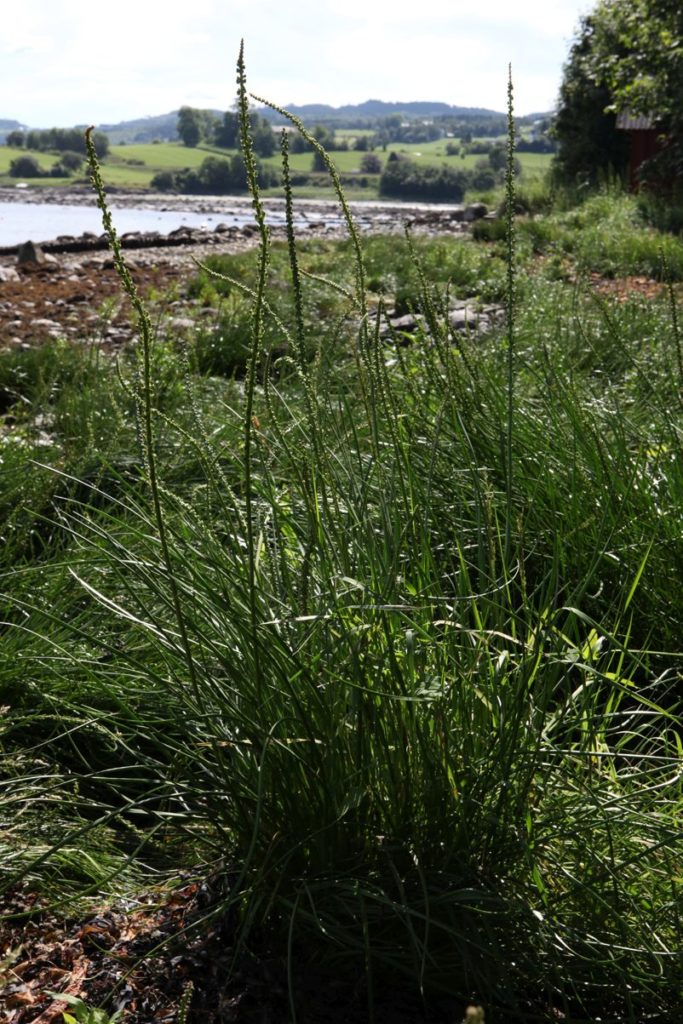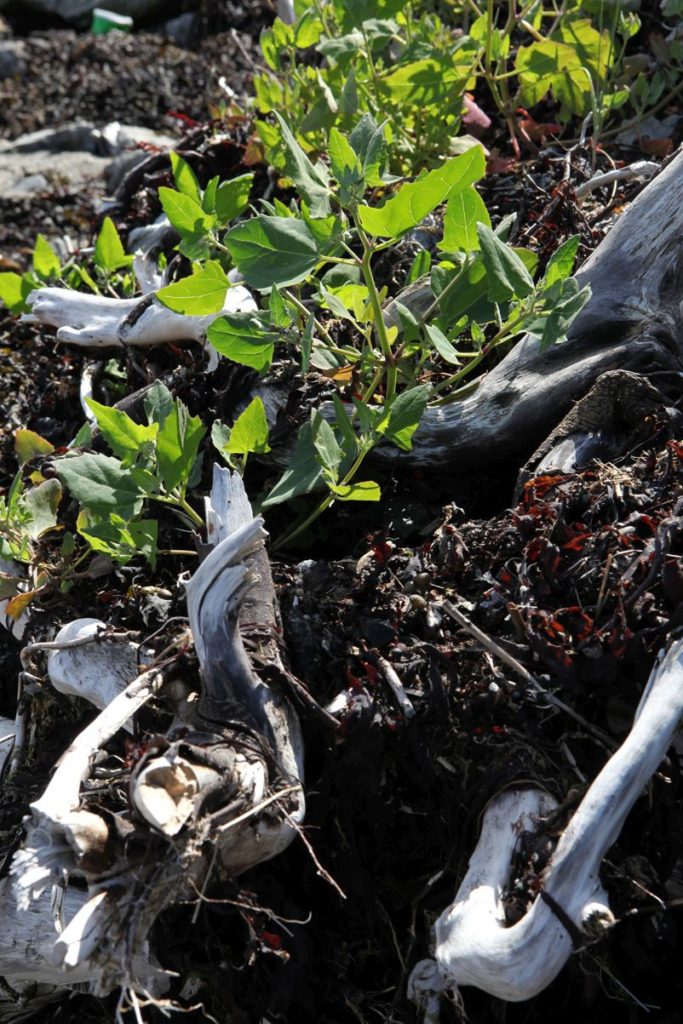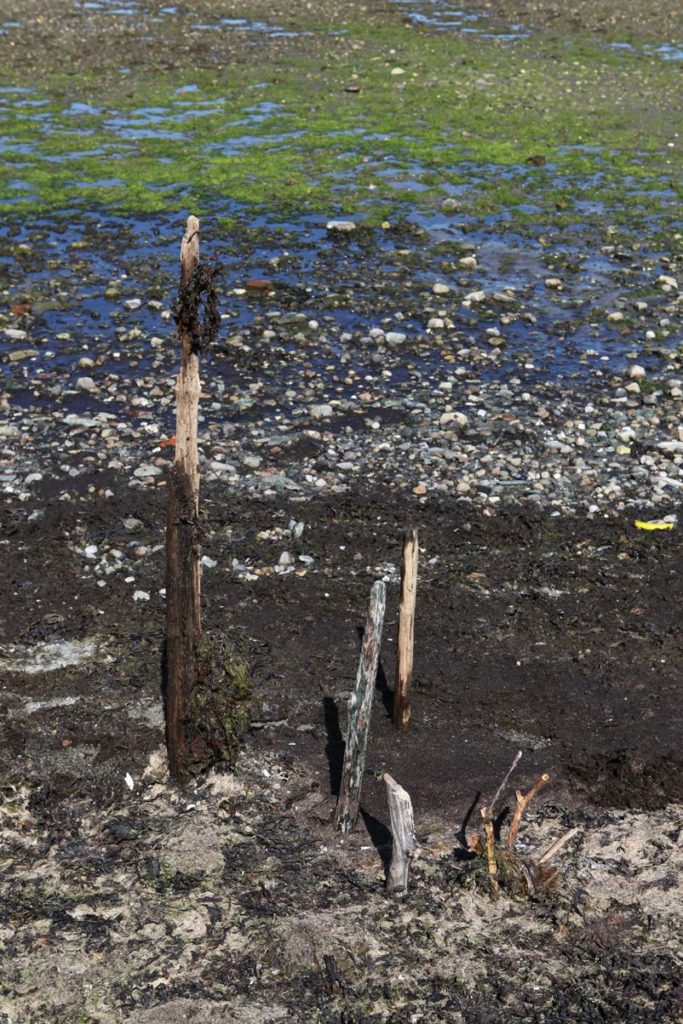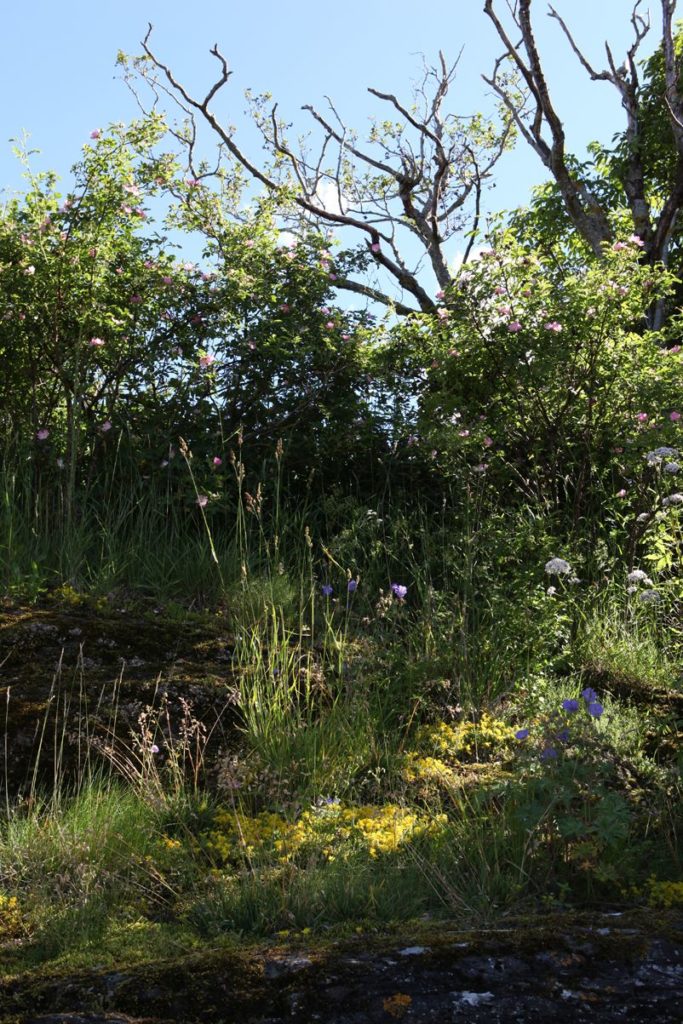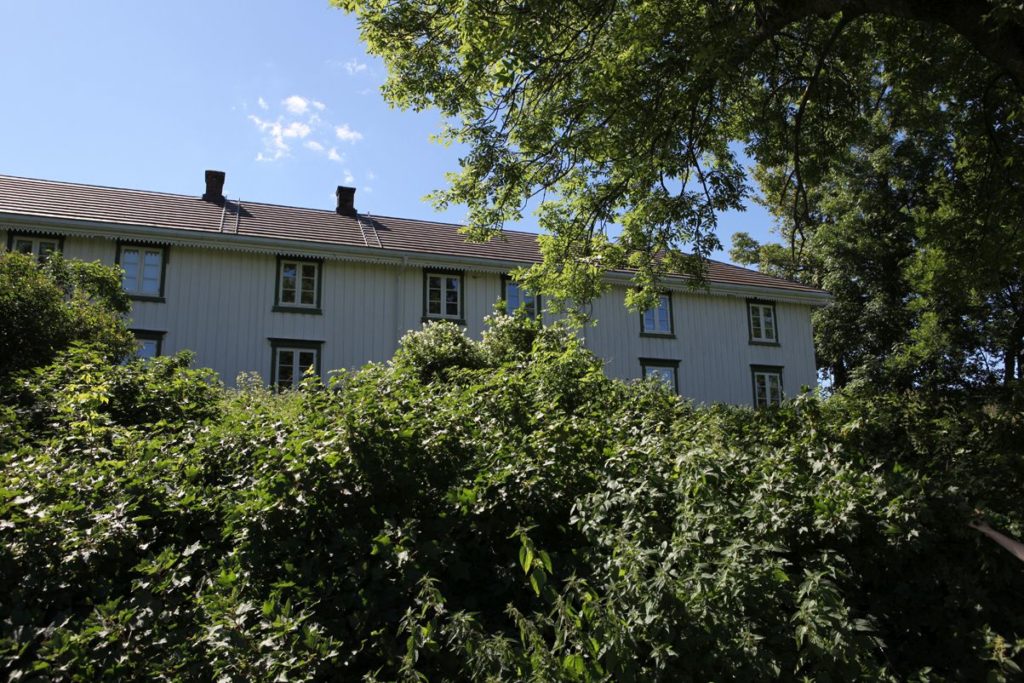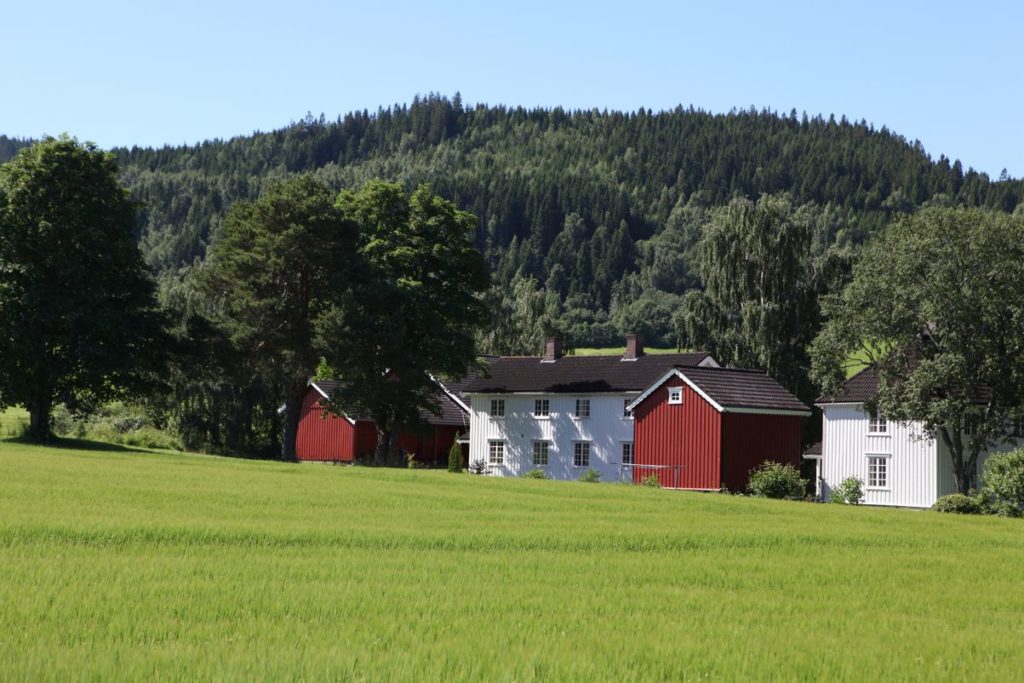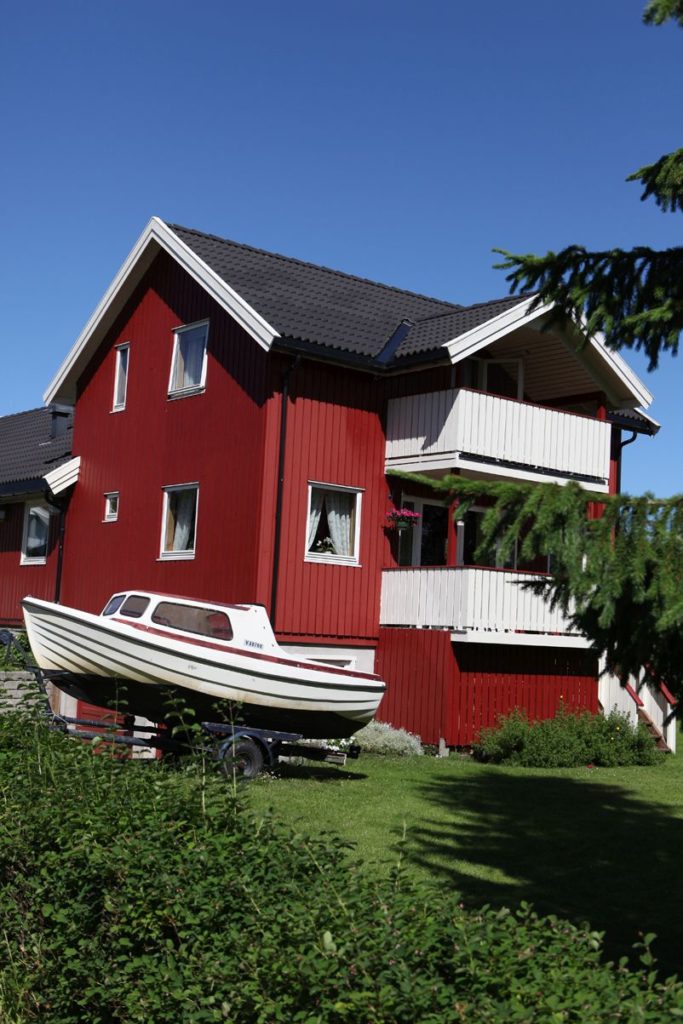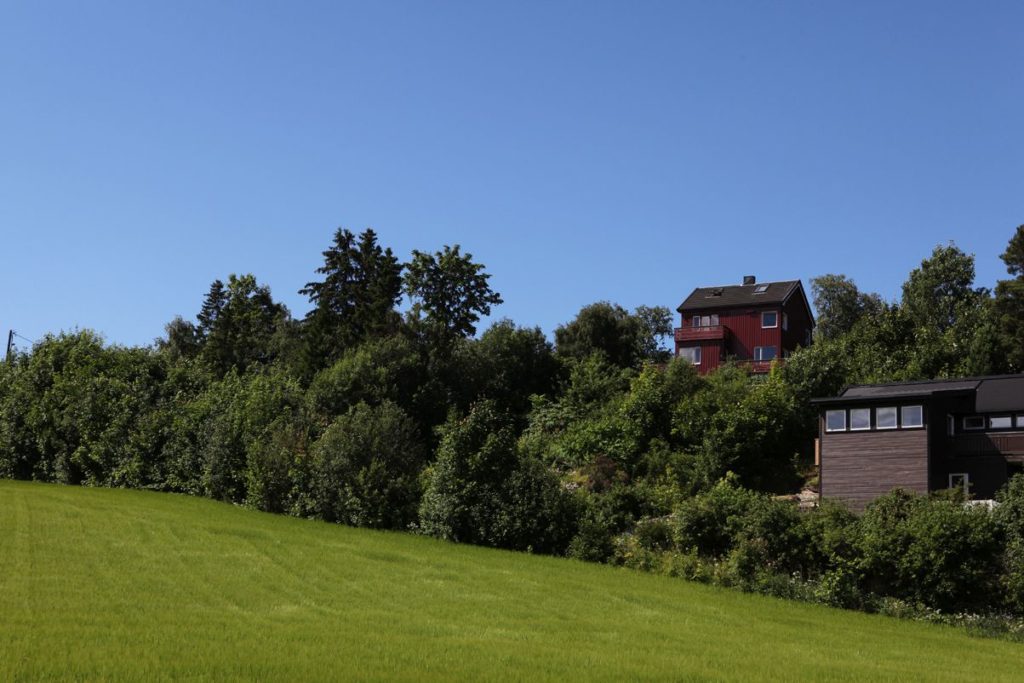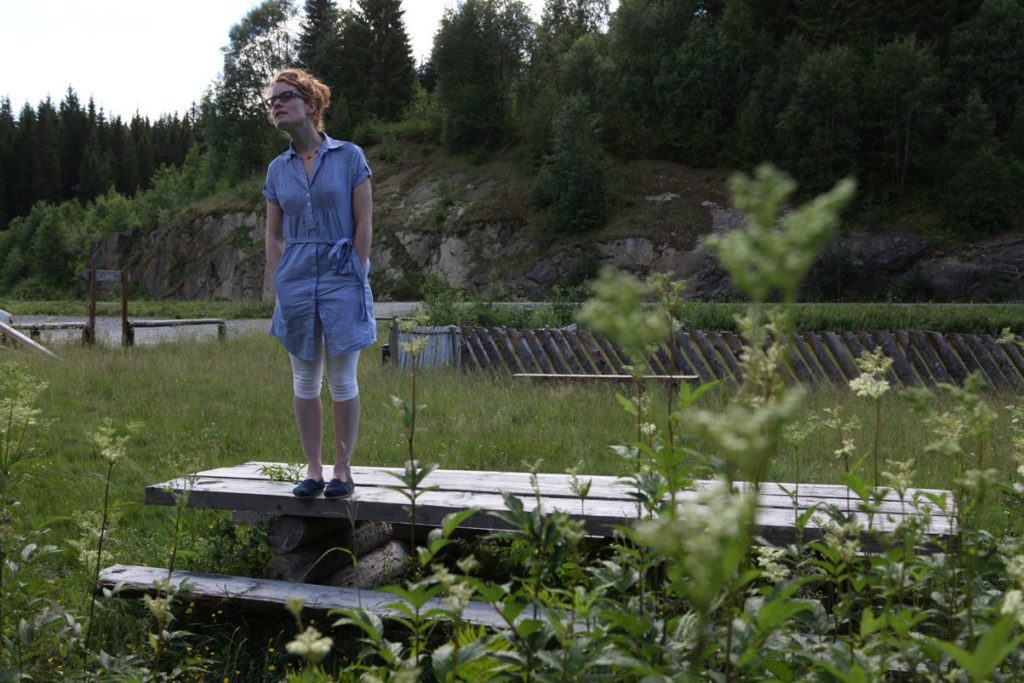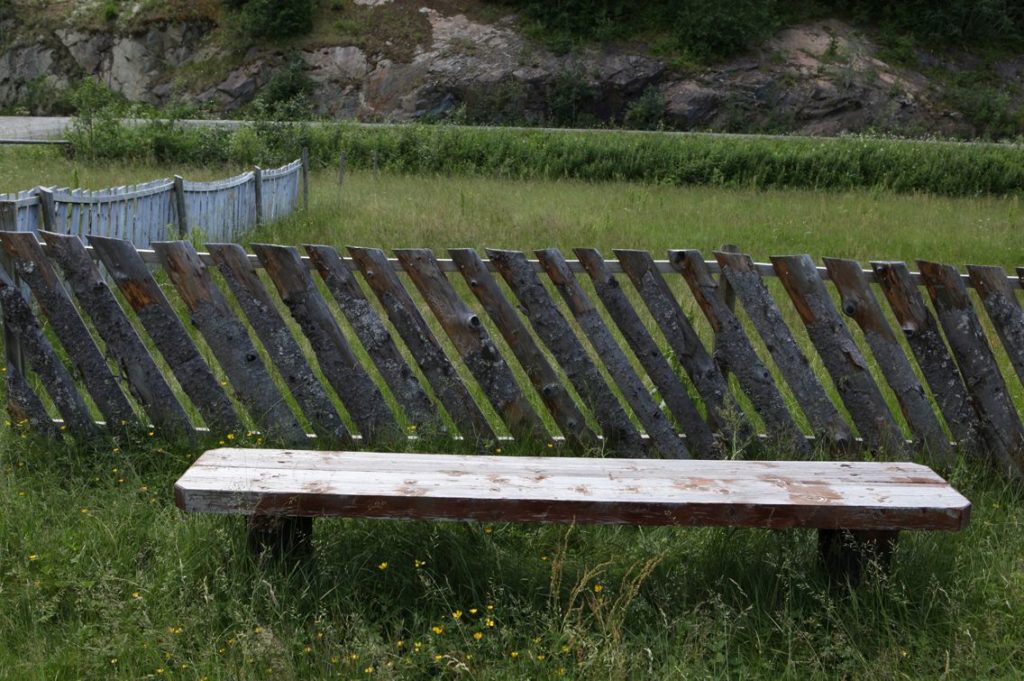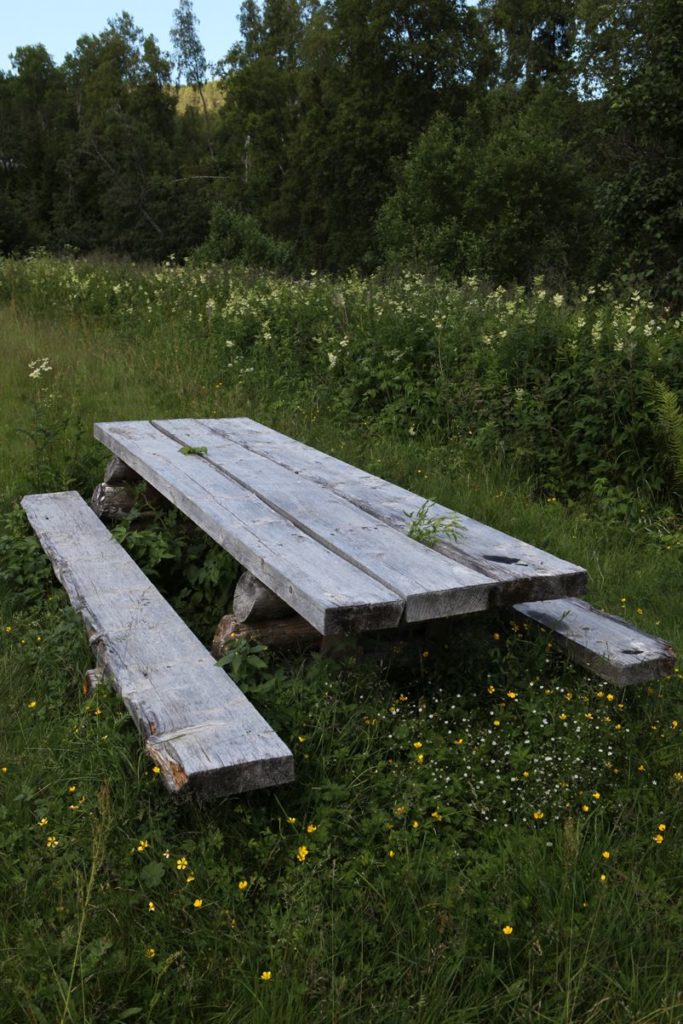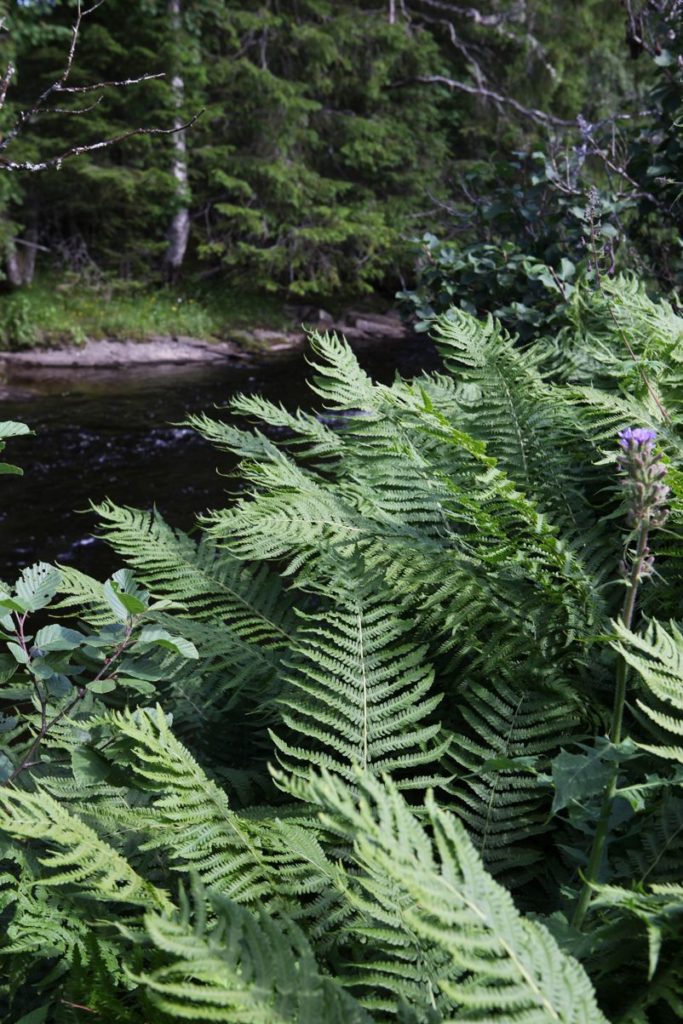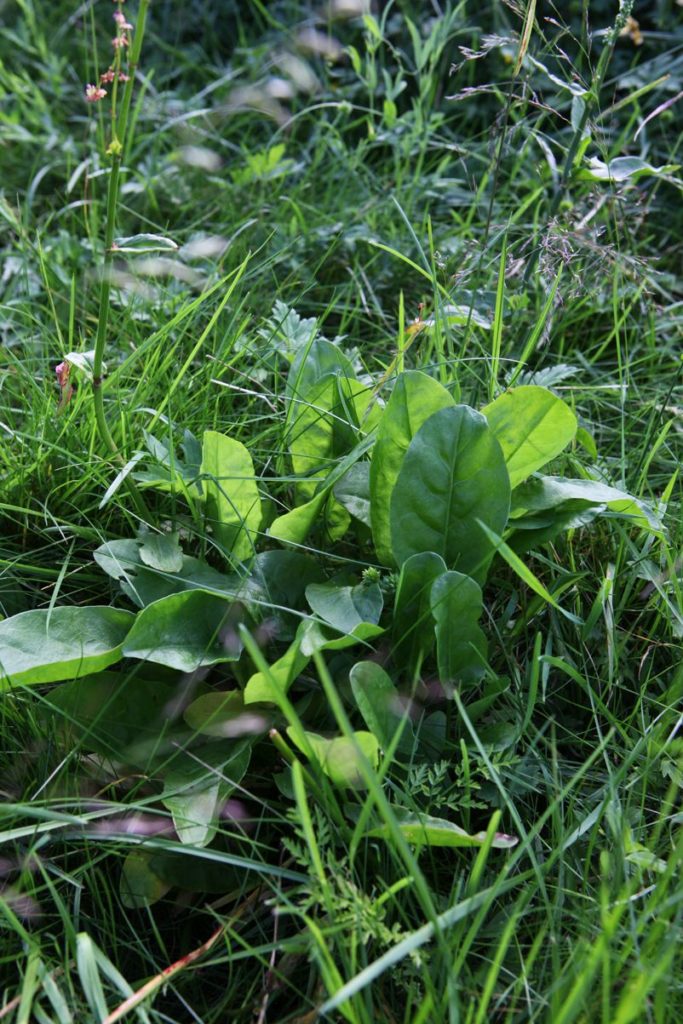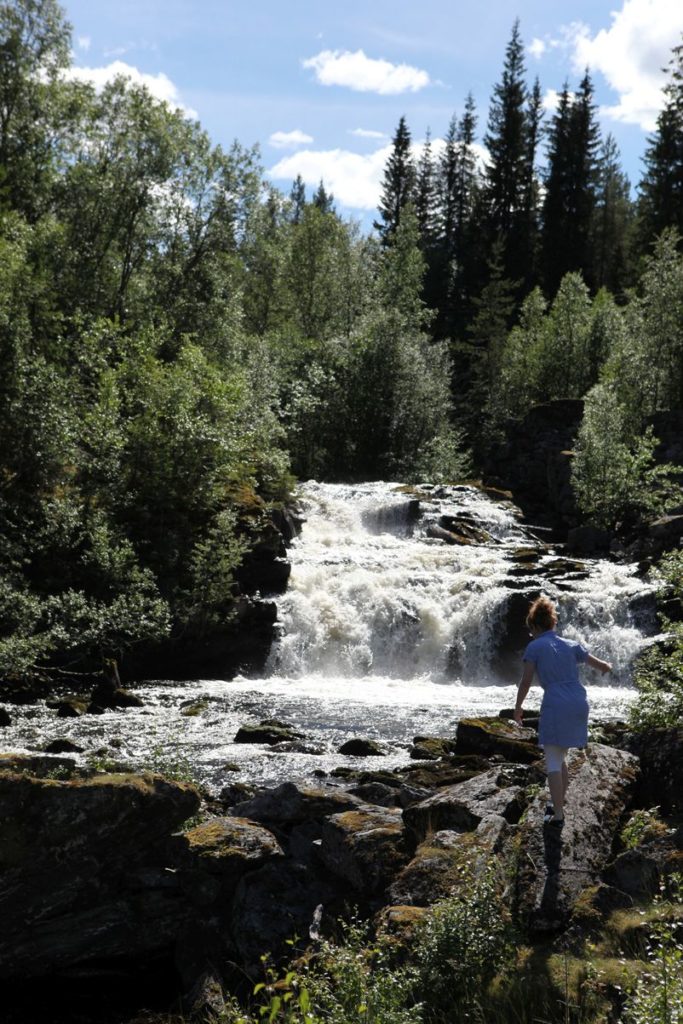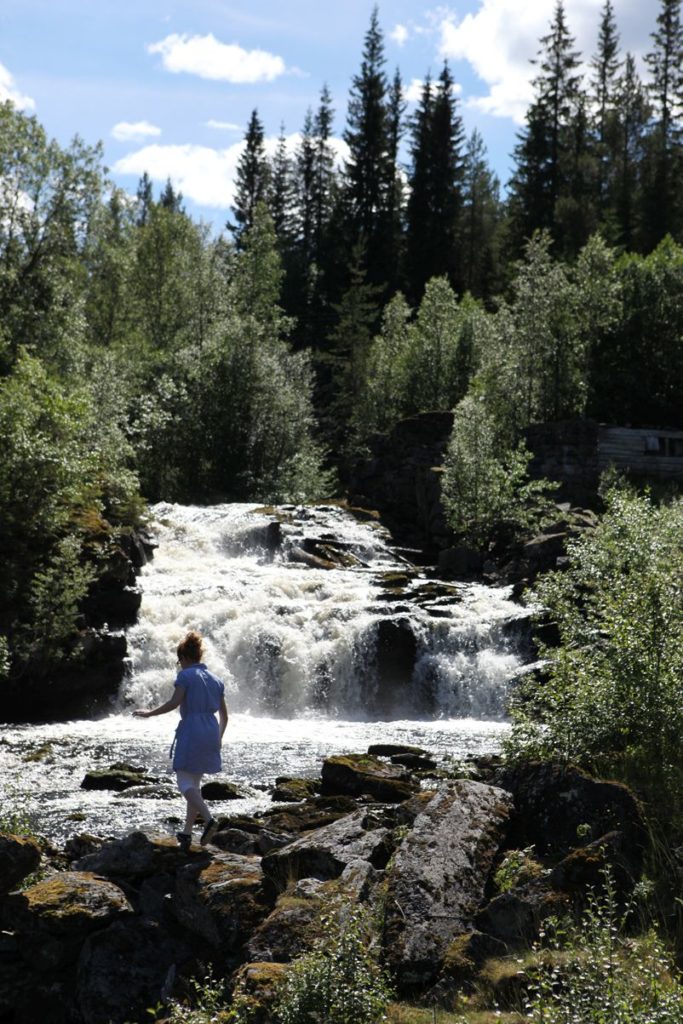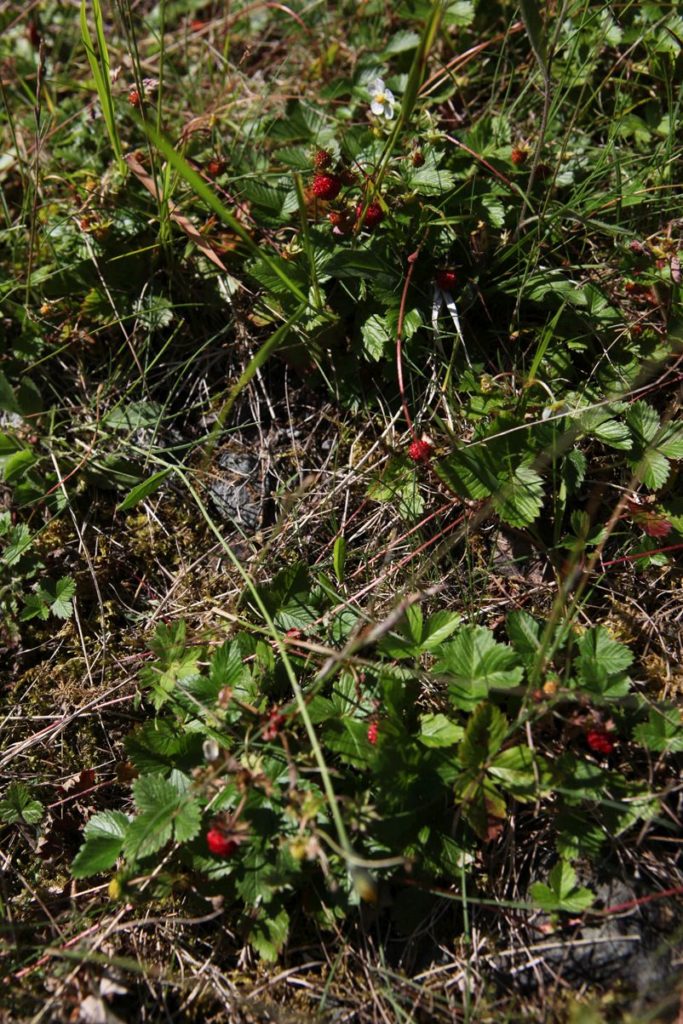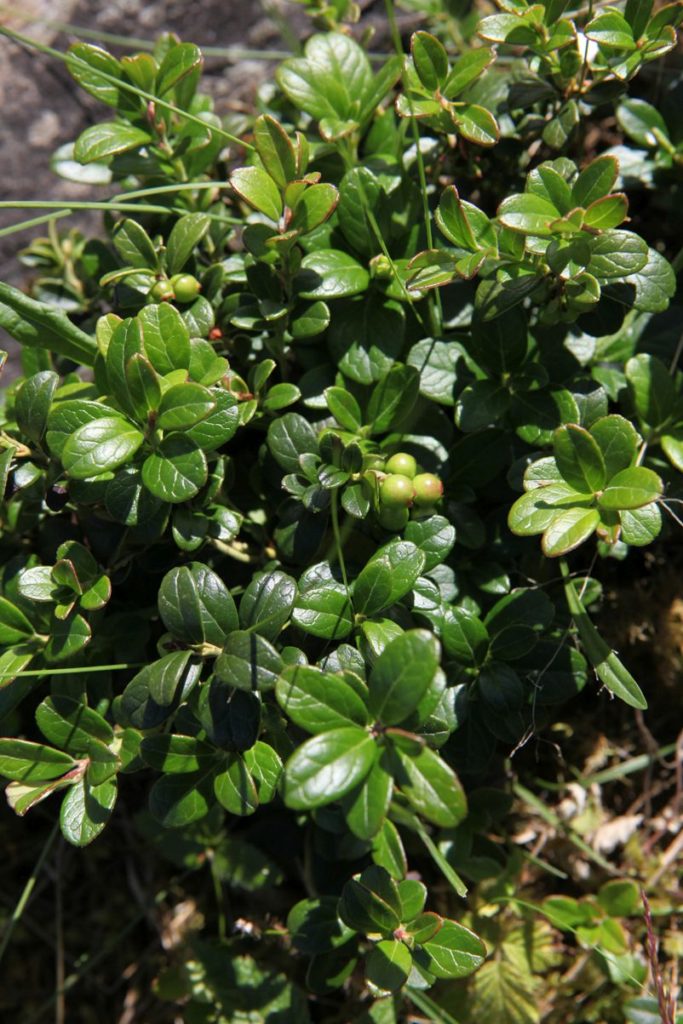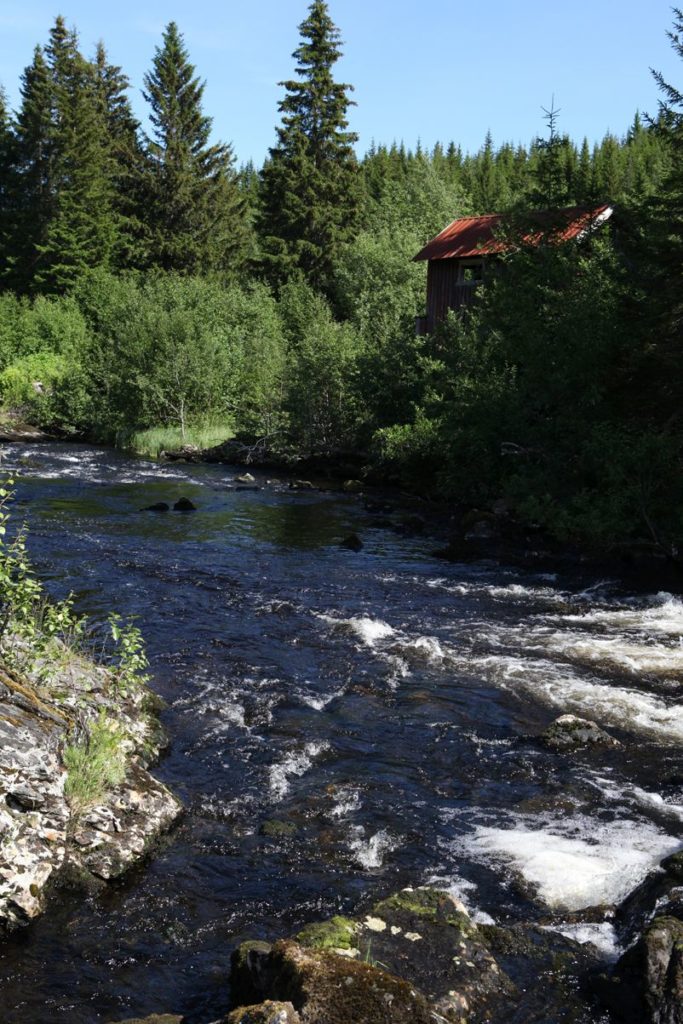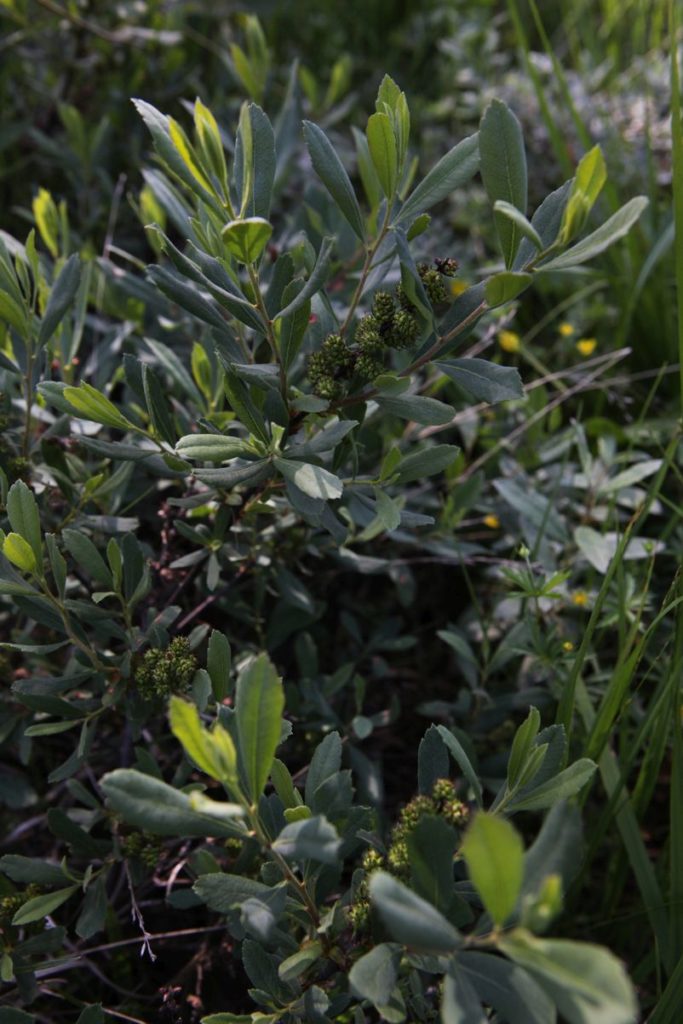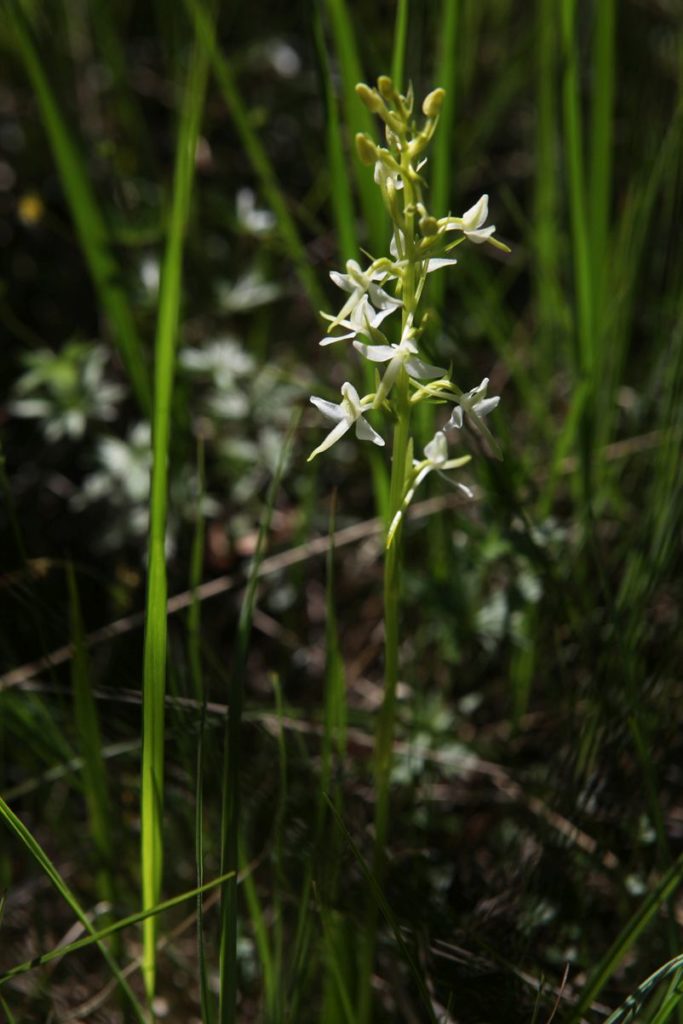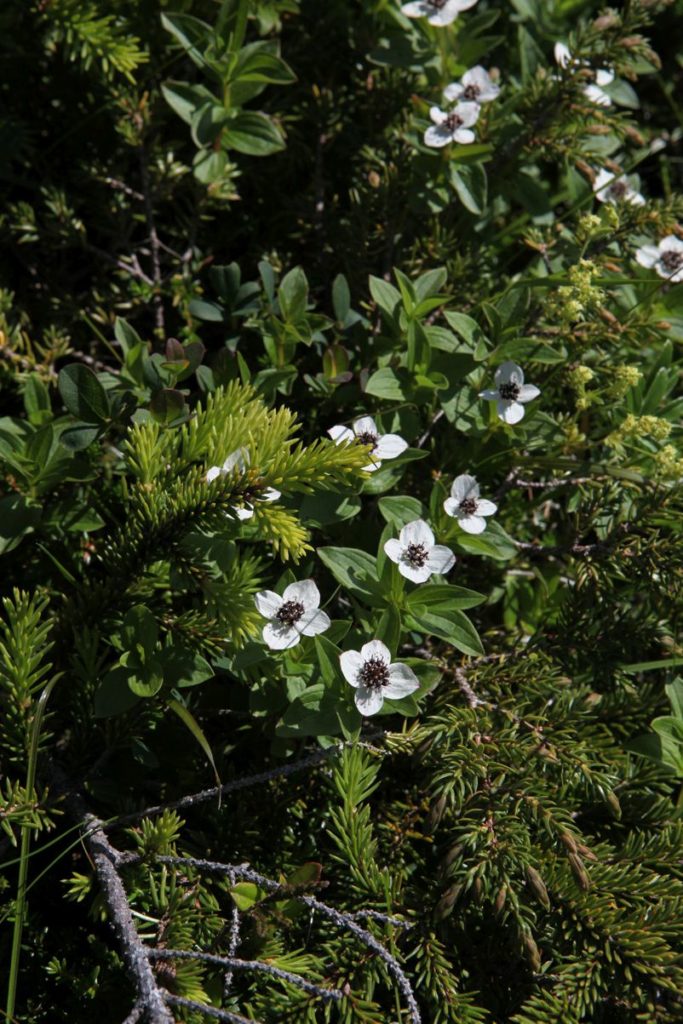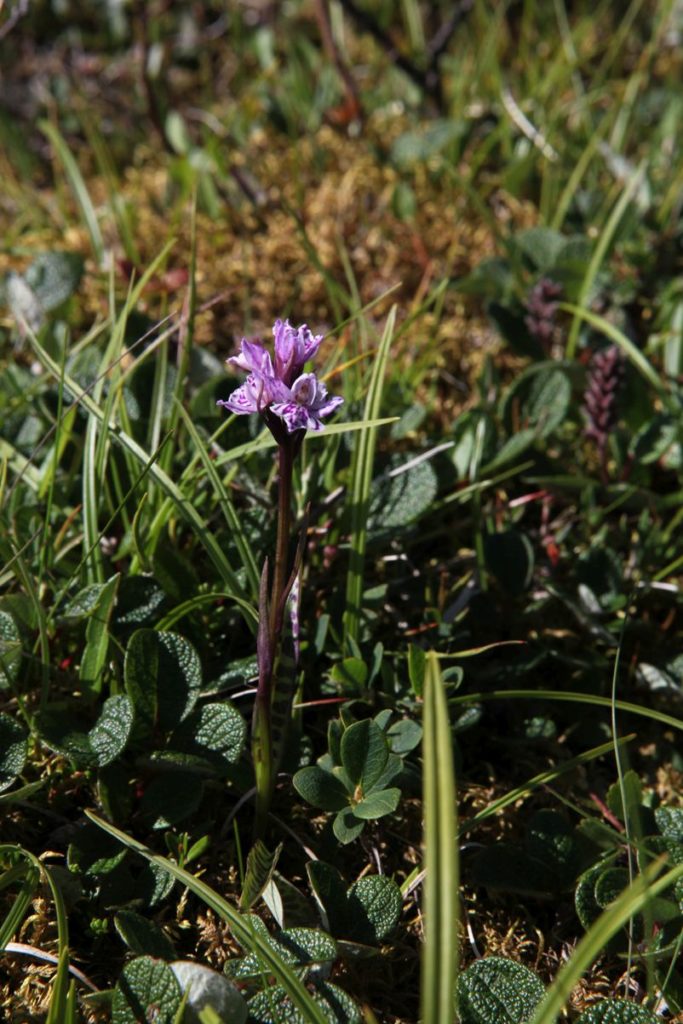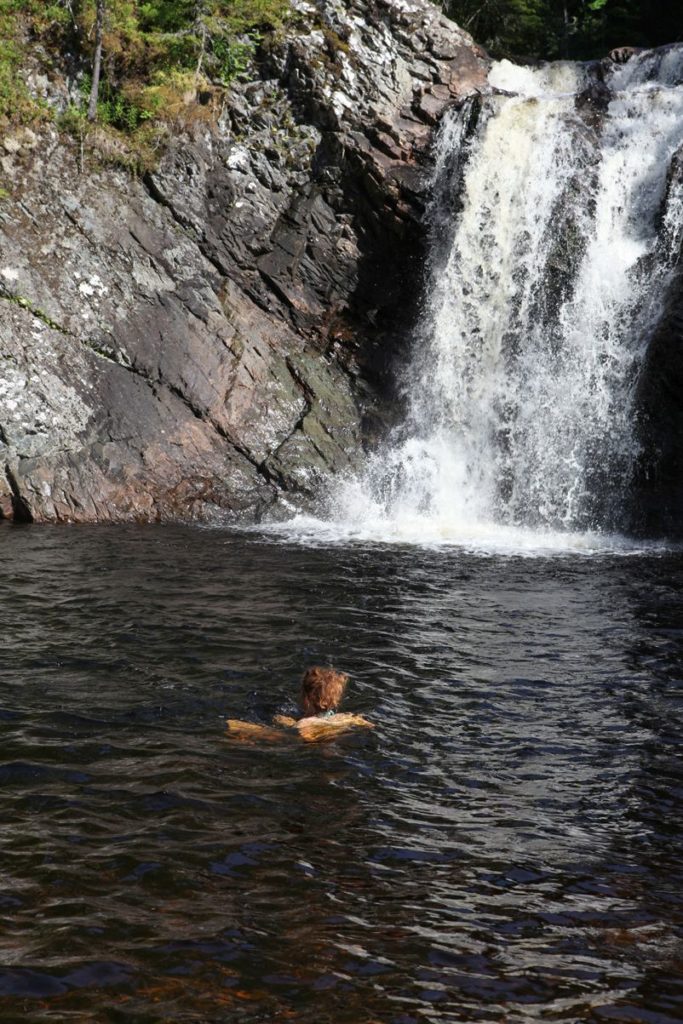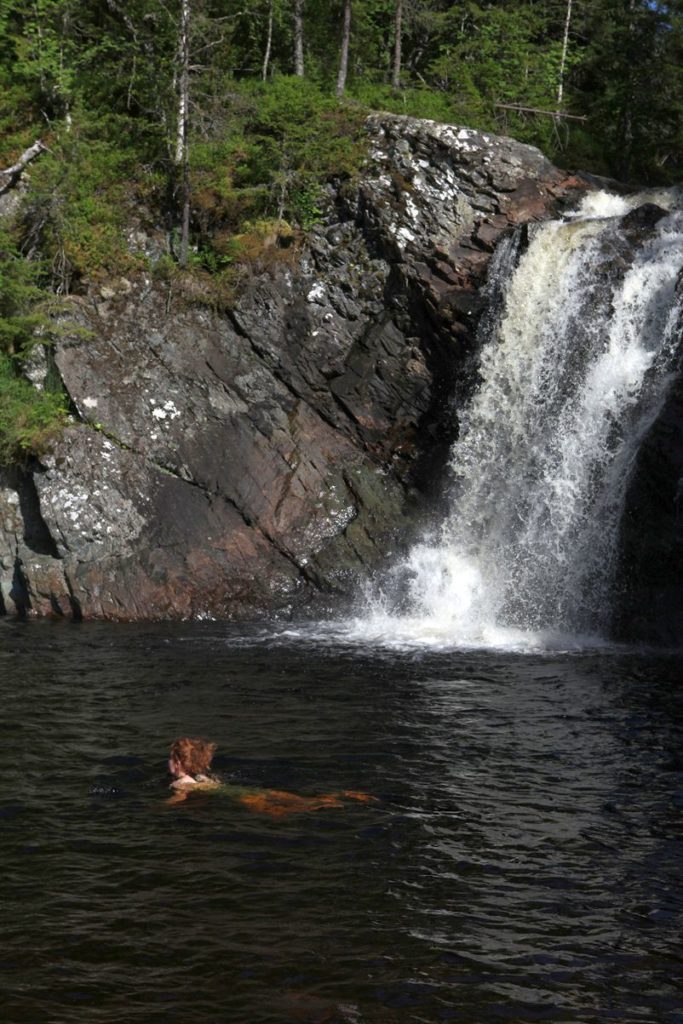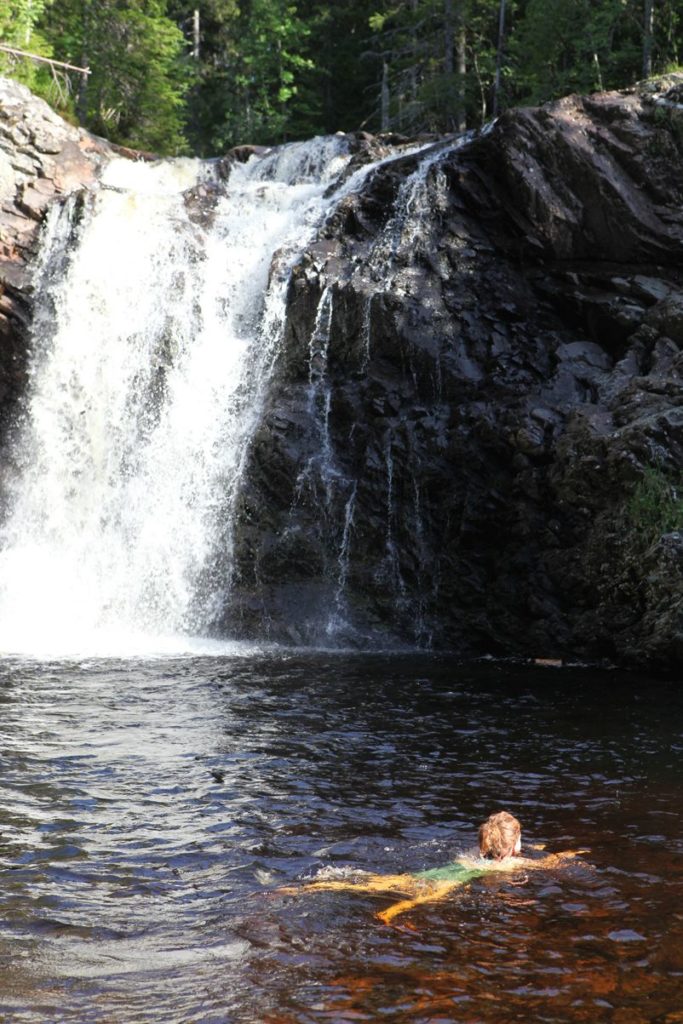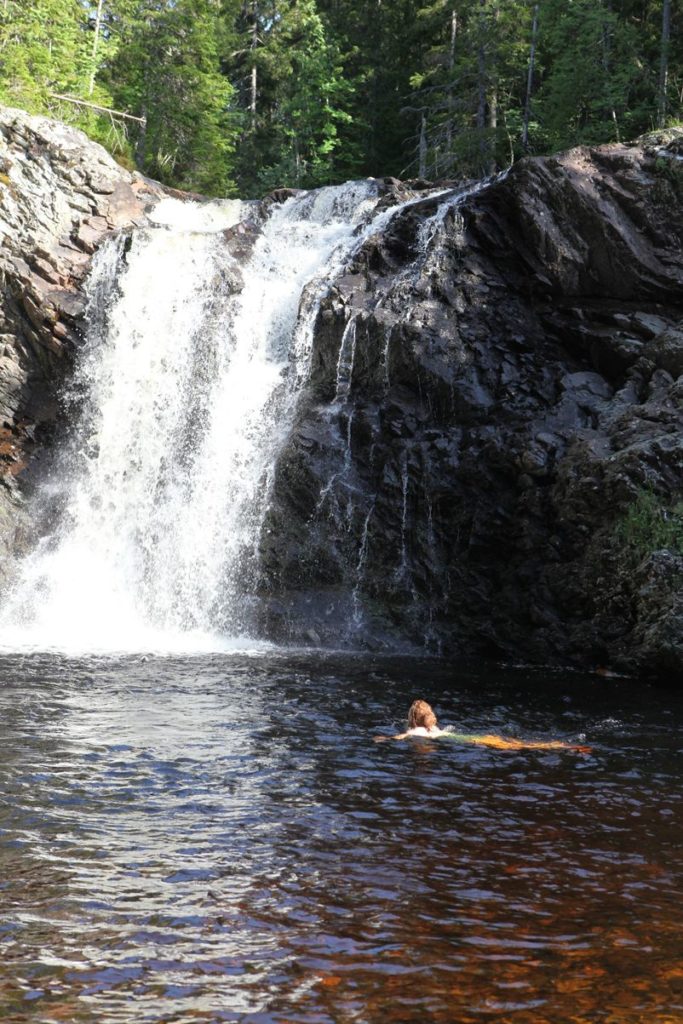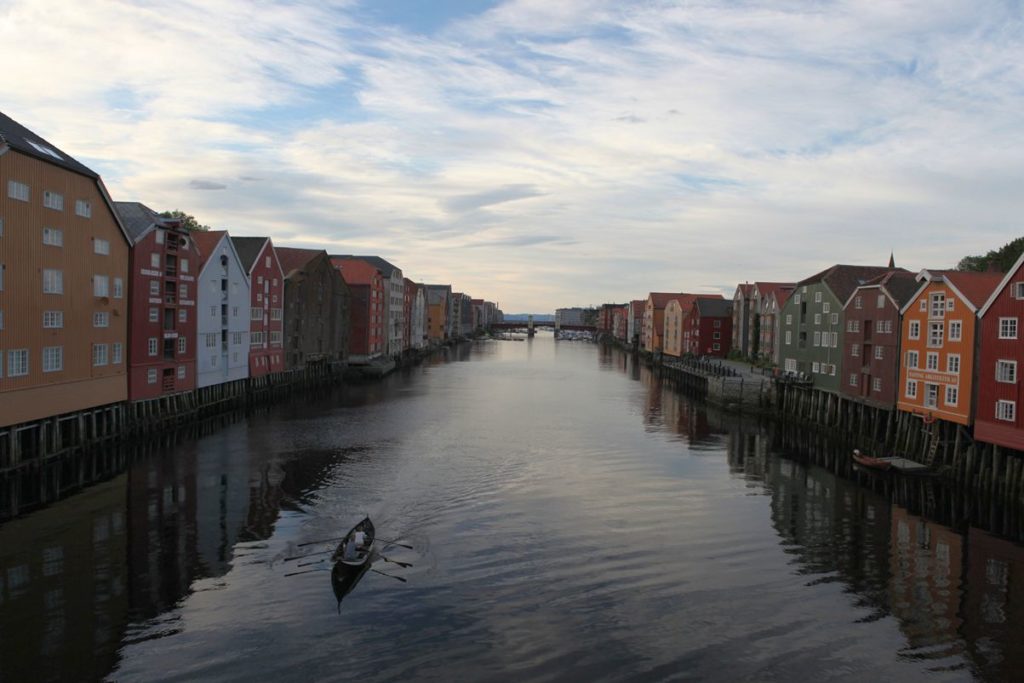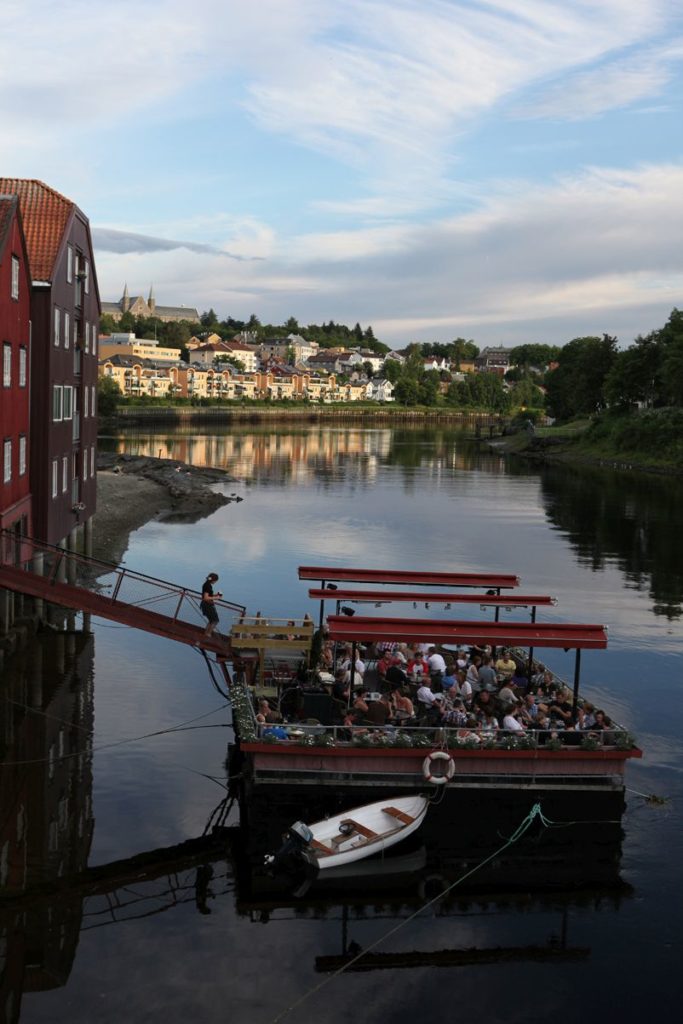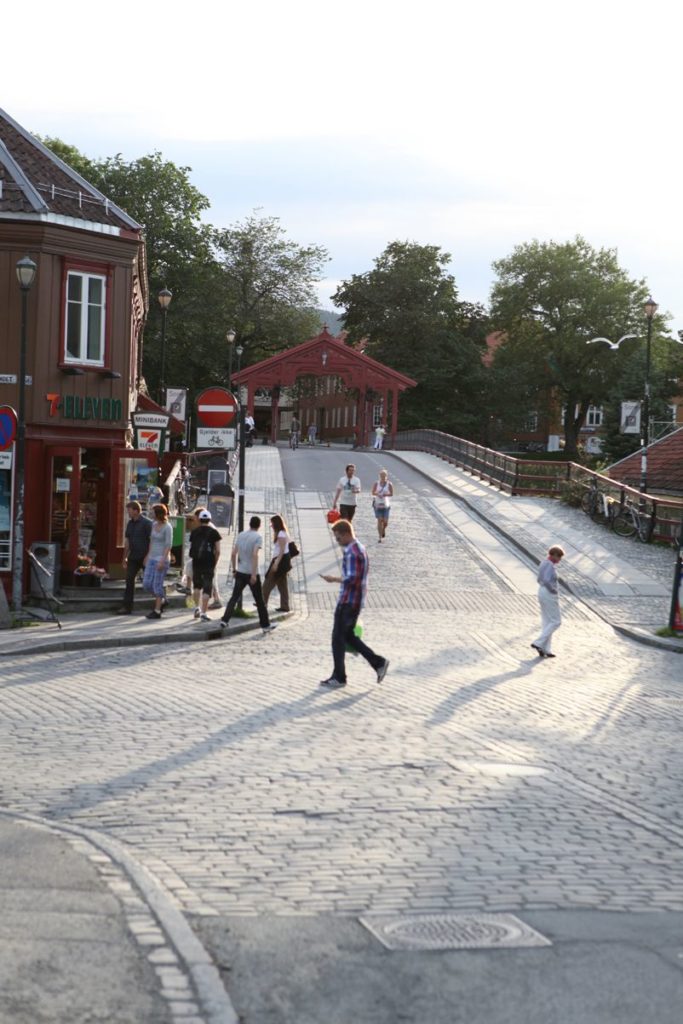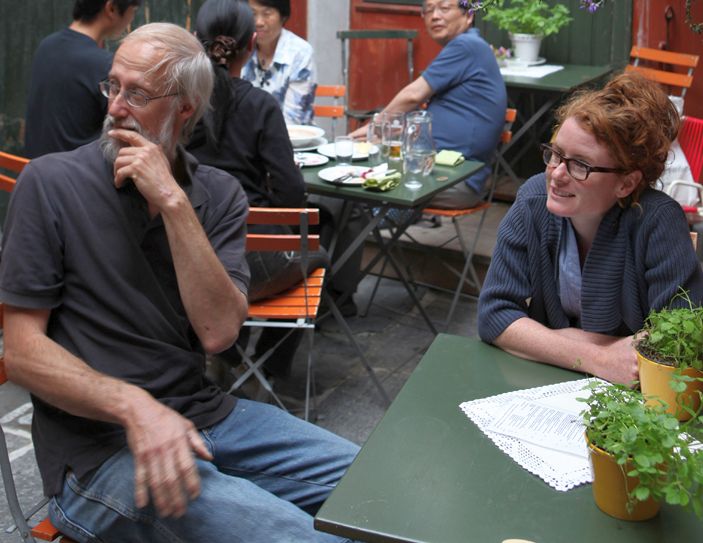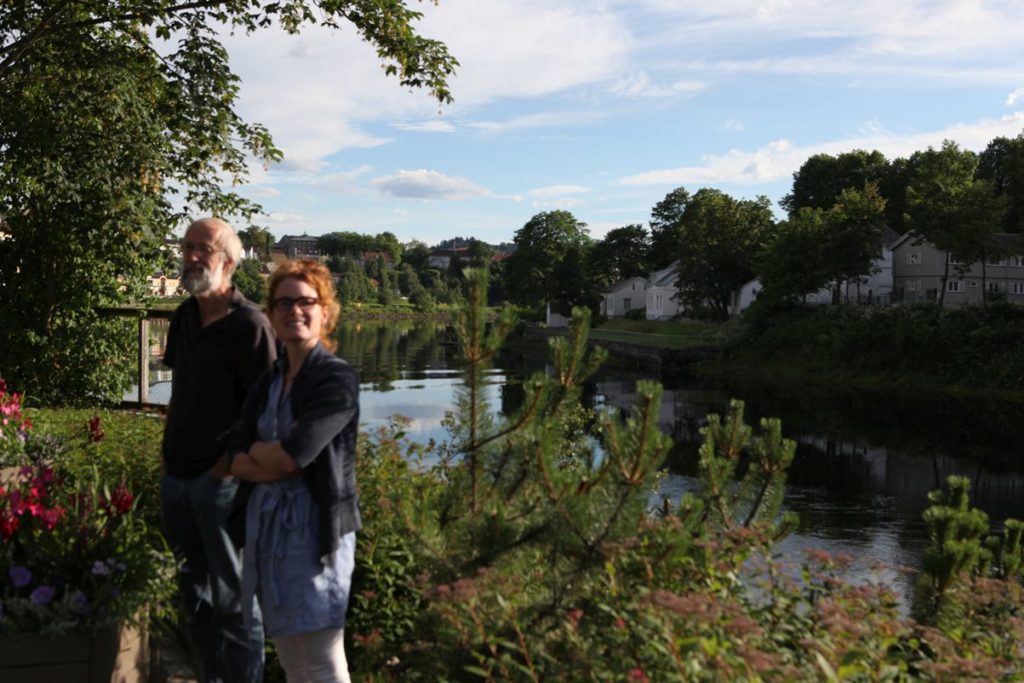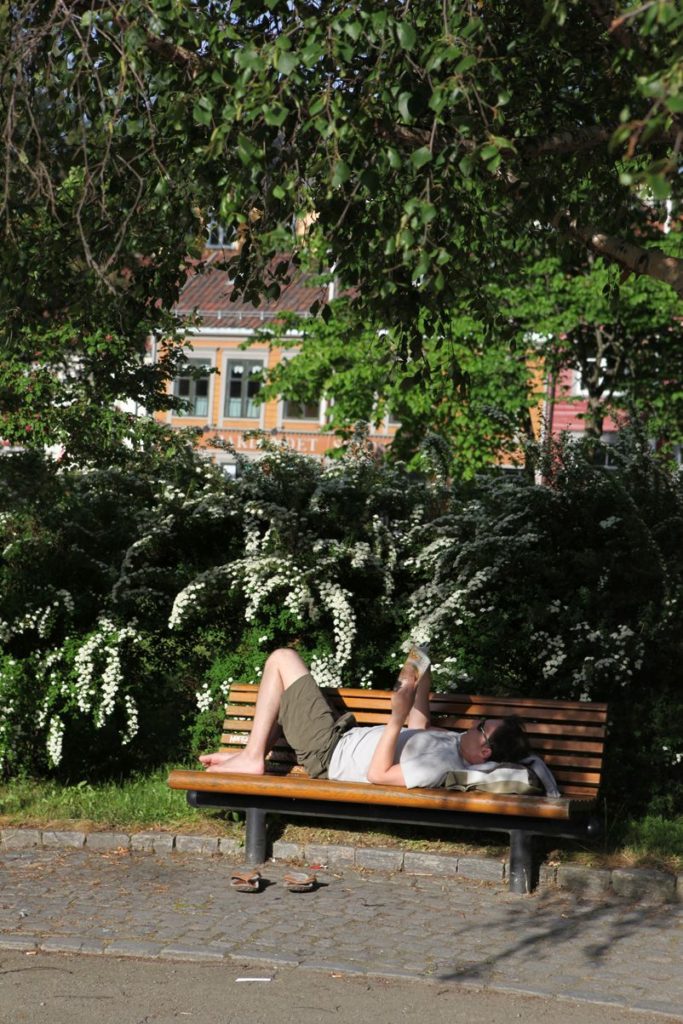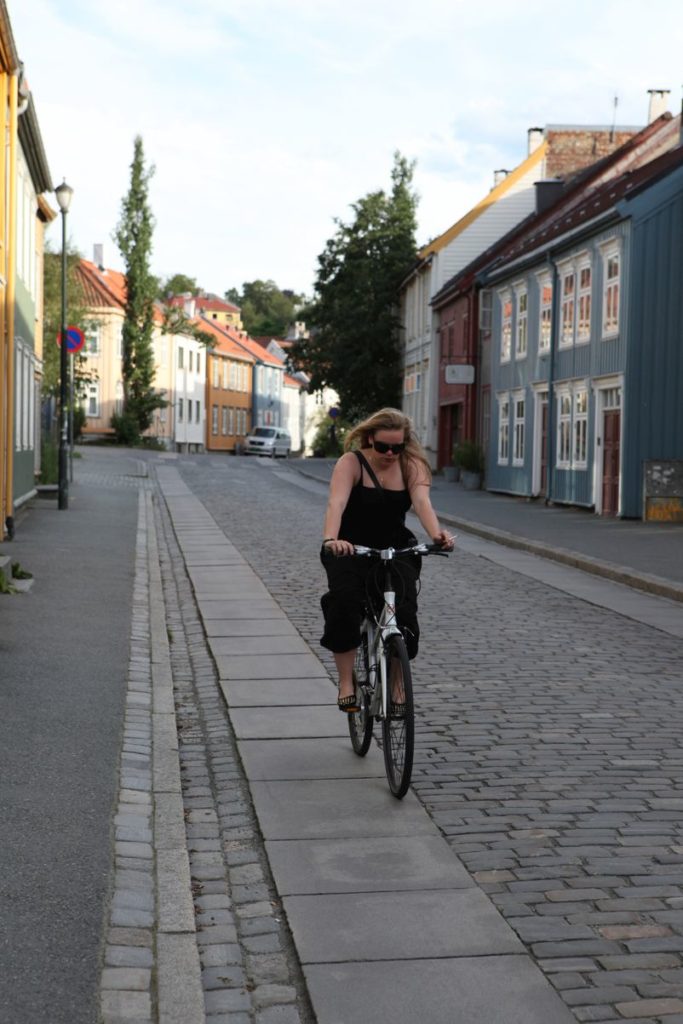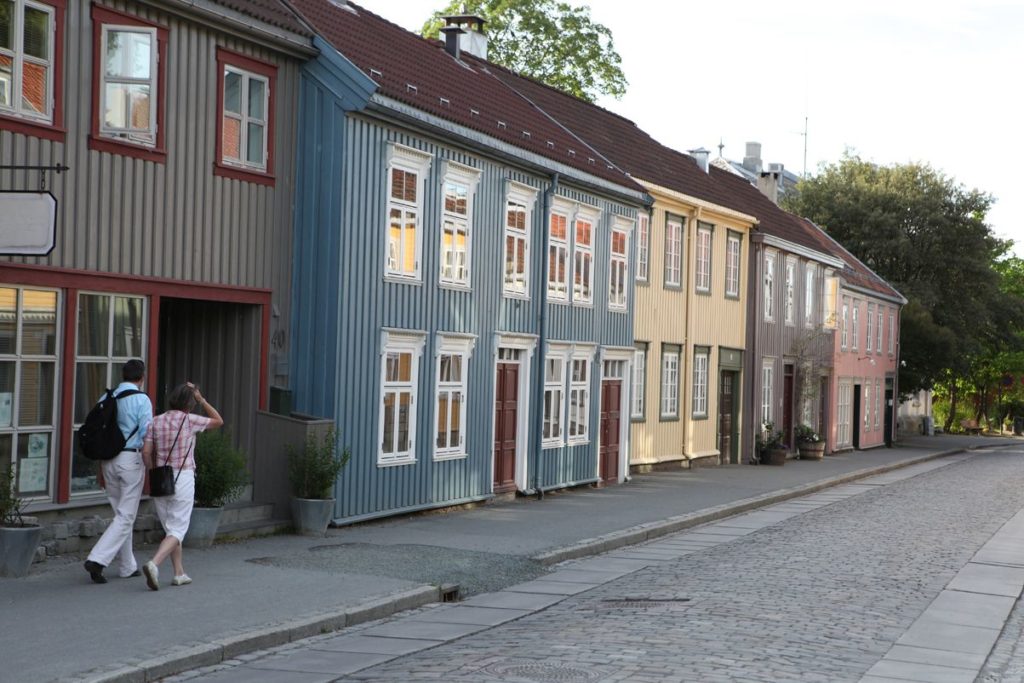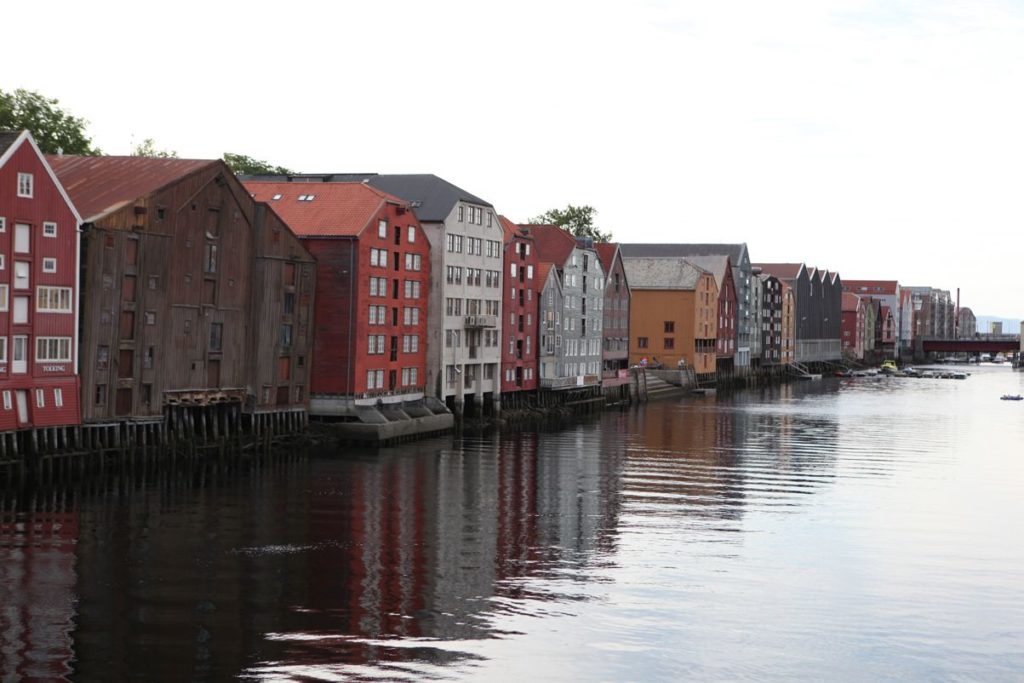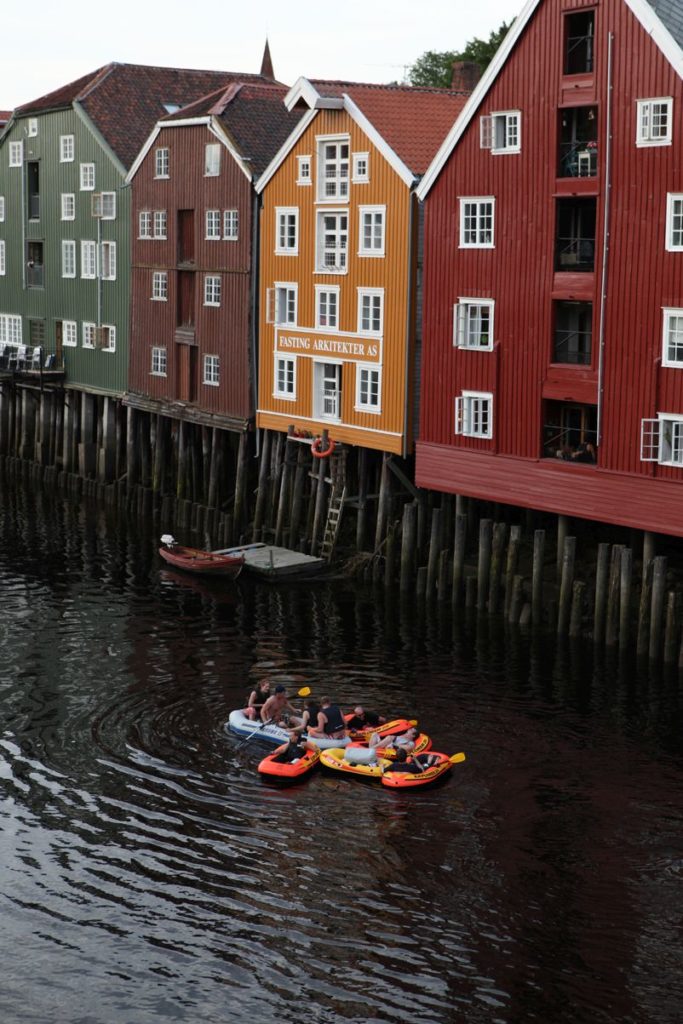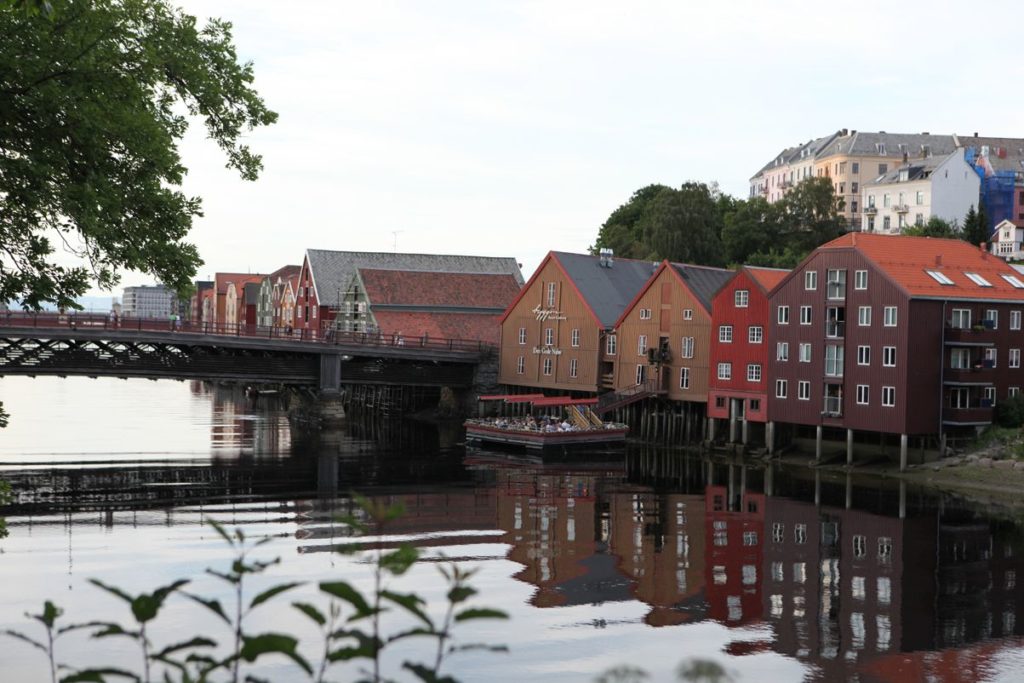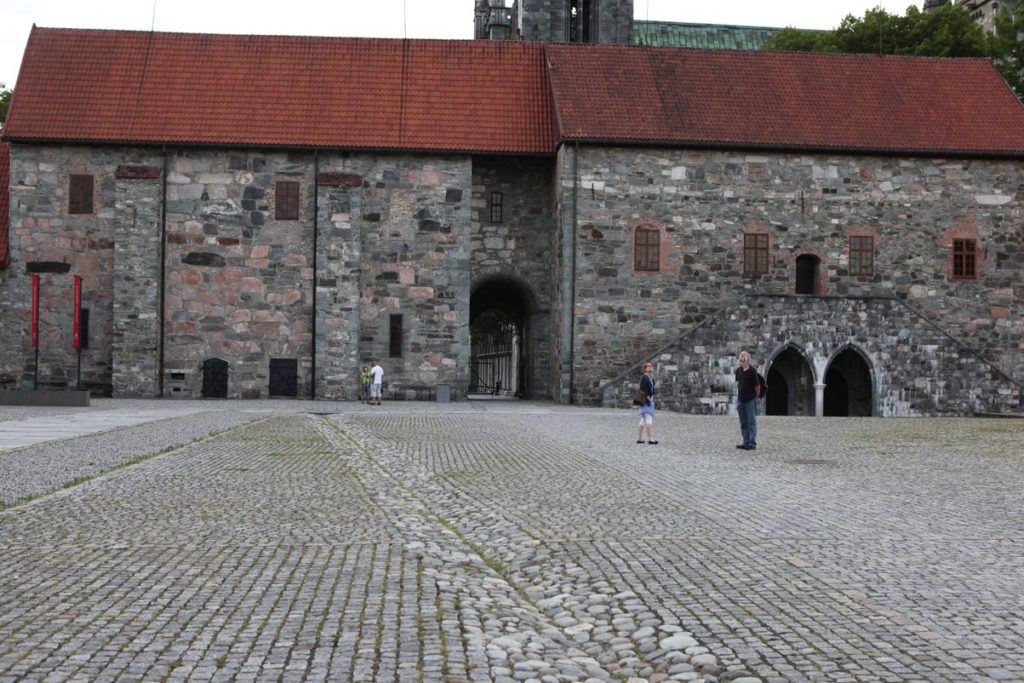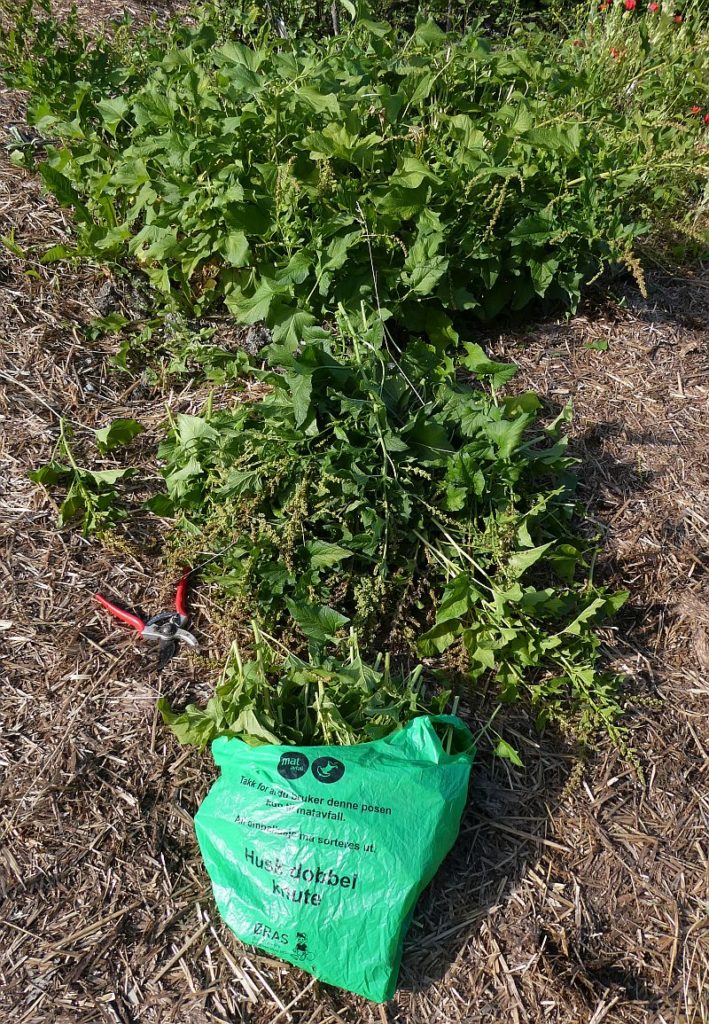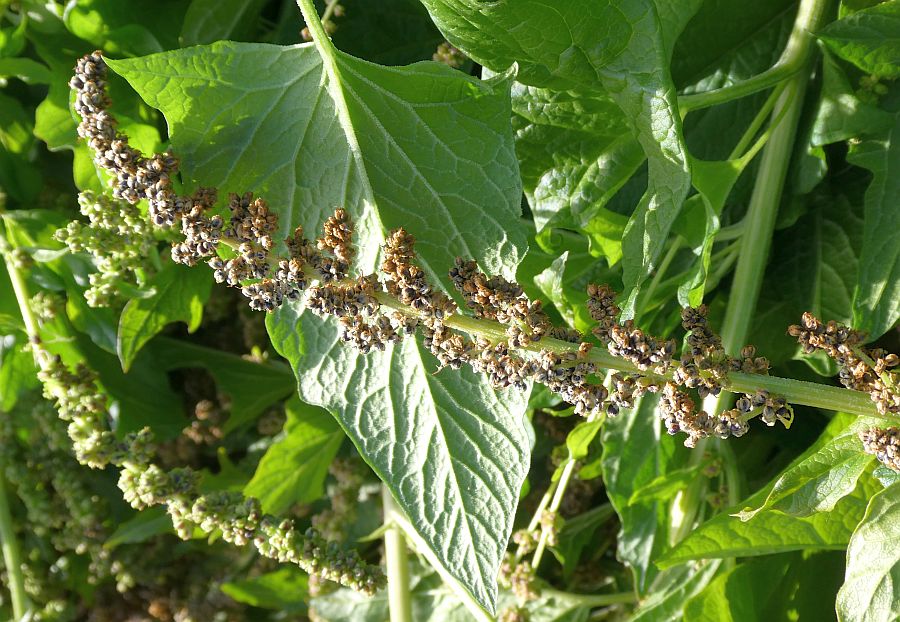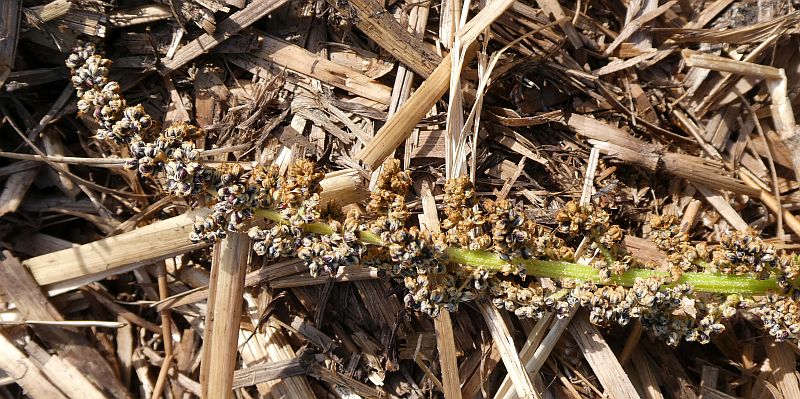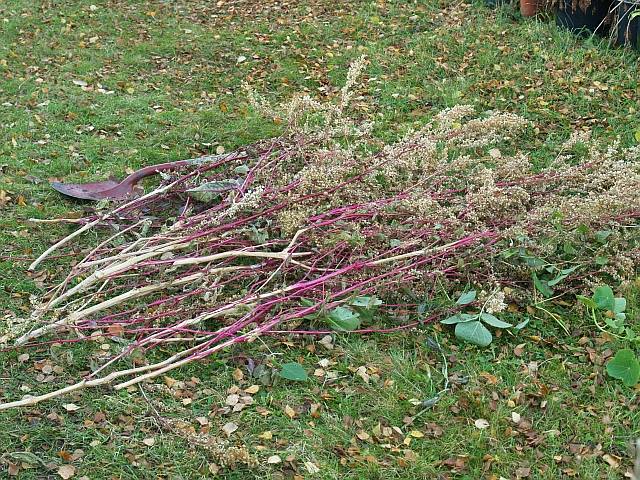The position of sunrise on the horizon changes rapidly here, perhaps 5 degs. every week. Twice a year sunrise happens close to the peak of Forbordsfjellet the mountain on the other side of the fjord from the house. I’d never captured this event on camera before…until yesterday:
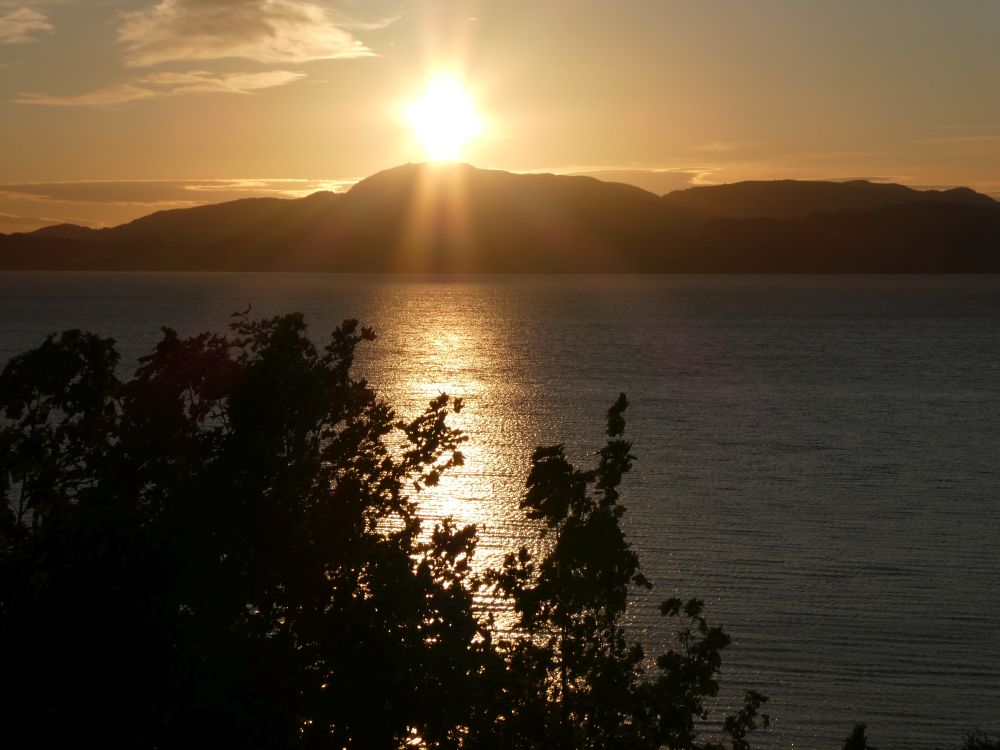
Monthly Archives: July 2020
Hopniss at 63.4N
Hopniss (Apios americana), one of several plants known also as ground nut, is a clambering perennial legume and native american food plant of Eastern North America from Southern Canada to the Gulf of Mexico. For a good account of this as a food plant, look no further than Samuel Thayer’s book “The Forager’s Harvest”. Like many others I’ve tried and failed to grow this and no longer do so. However, it was fun trying and I did at least get something to eat.
I first planted this 20 years ago in my old unheated greenhouse in October 1999. Hillery Hanby who was a member of the Yahoo group Edible Wild kindly sent me a tuber. It grew weakly and didn’t produce anything. Then in early 2009, Hristo from Bulgaria, one of the active members of the Homegrown Goodness forum persuaded me to try again with his supposedly improved variety and I planted it in the greenhouse in spring 2009. This grew better and flowers were opening on 9th October 2011:


On 13th November 2011 I discovered I had a small yield (this is 3 year’s growth!). The tubers grow on a long string rhizome and Sam Thayer reports from 2 to up to 20 tubers on each. He also reports that tubers (in the wild) can vary from size of a grape to a grapefruit and shape also varied considerably.
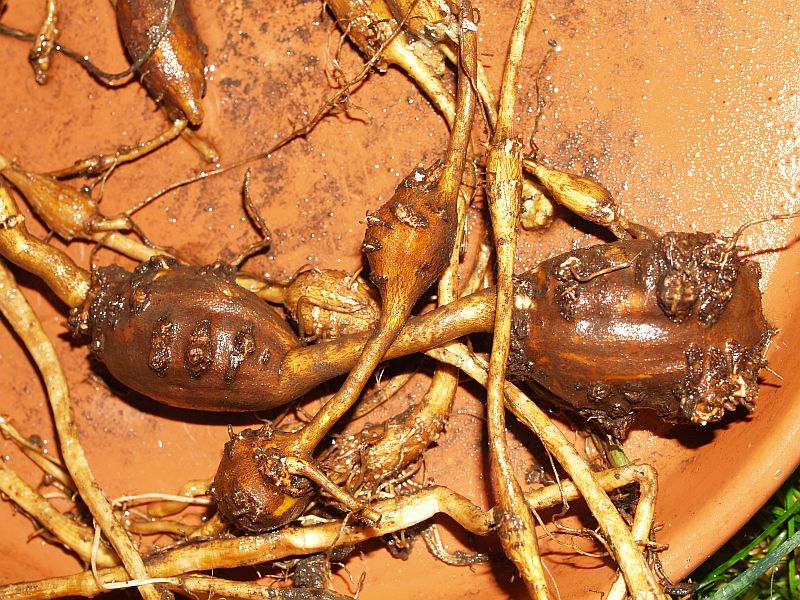

I also had a plant grown in two large pots which I also harvested and both had about 15 small tuberlets on the rhizome that was found winding aroud the base of the pots:

Then, a month later, disaster struck and the greenhouse look like this after a major storm, Dagmar, devastated this area:
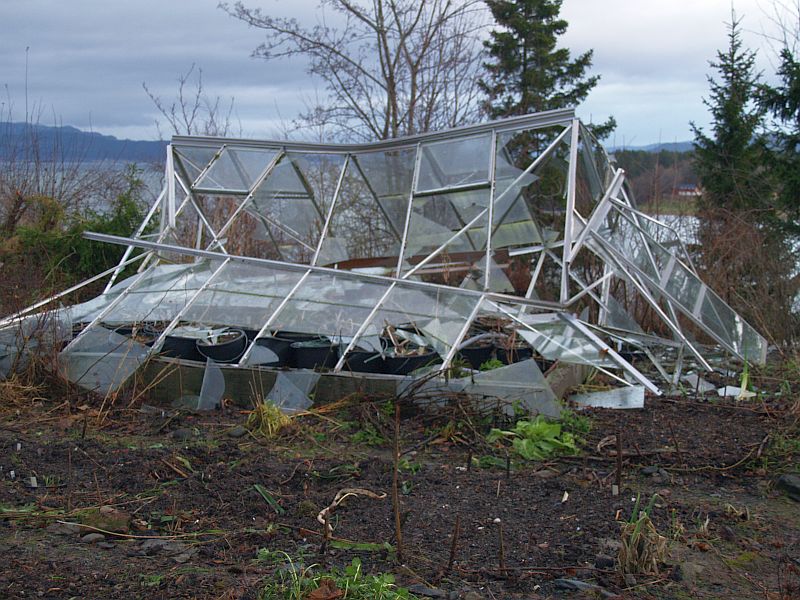

I had replanted some tubers which grew poorly under the new colder conditions without the greenhouse. I was therefore suprised to find my largest tuber “ever” two years later on 26th October 2013:

I suspect that I had missed this one in 2011 and this was one was therefore the result of 5 seasons of growth. Then, in 2014, I took part in trials of new improved varieties. Søren Holt in Denmark coordinated this trial of 4 varieties received from Gautam in New York. Both Søren, Åke Truedsson and myself participated. Gautam wrote: “I have just received our latest batch of improved Apios americana, and am taking the liberty of sending you a very few tubers of our best “bunching” and “trailing” cultivars. Will send you the smallest sizes, for convenience in shipping, but not to worry. They come from excellent stock, with excellent size potential”. Here they are on arrival:

They were planted in a sheltered spot in the garden. These improved varieties were far from improved enough for my climate and. despite having shoots ready on planting, two of the varieties didn’t even bother to grow and the second two grew so badly that I gave up the trial after a couple of years!
So that’s my experience of hopniss in Malvik. I guess I need to try at least one more time before saying it’s not worth it in my climate.
There is one other species, Apios priceana. This one produces one large tuber, but judging by its wild distribution it is unlikely to be more cold tolerant. I’ve only seen it once, at Joe Hollis’ Mountain Gardens in North Carolina last autumn.
Tree reflections in the Bay
RIP Stephen Facciola
I was very saddened to hear yesterday evening that Stephen Facciola, author of Cornucopia II: A Sourcebook of Edible Plants, the most useful reference work in my journey into the world of edible plants since I bought it 20 years ago, has died in California. This means, sadly, that his monumentous work on the world’s edible plants will probably never be completed. However, he was aware that it would take 20-30 years to complete when he first told me. I was in contact with Stephen over the last 10 years since he contacted me for a copy of my article on Hosta in Permaculture Magazine and I later sent him a copy of my book as he wanted to know more about Hablitzia in particular! He sent me 3 sample plant profiles in 2018 and I will post them below and in my Edimentals and Perennial Vegetables FB group to give you an idea of what could have been.
The picture below was taken some 5 years ago when I finally got a new copy of the book to replace my original copy. Today, the new book looks almost as bad as my first one
I sent the picture to Facciola, he laughed and commented he’d never seen such a well used copy ![]()

Thanks to Joshua Christian for posting this link to an article about Facciola that I’d never seen: https://www.sandiegoreader.com/news/2000/nov/22/cover-cornucopia-stephen-pacciolas-edible-world
The following obituary by David Karp was posted on the FB group of the
Oxford Symposium on Food and Cookery
(incidentally, Karp also wrote this article, All Things Green and Edible in the Los Angeles Times at the completion of Cornucopia II at the end of December 1998: https://www.latimes.com/archives/la-xpm-1998-dec-27-fo-57875-story.html)
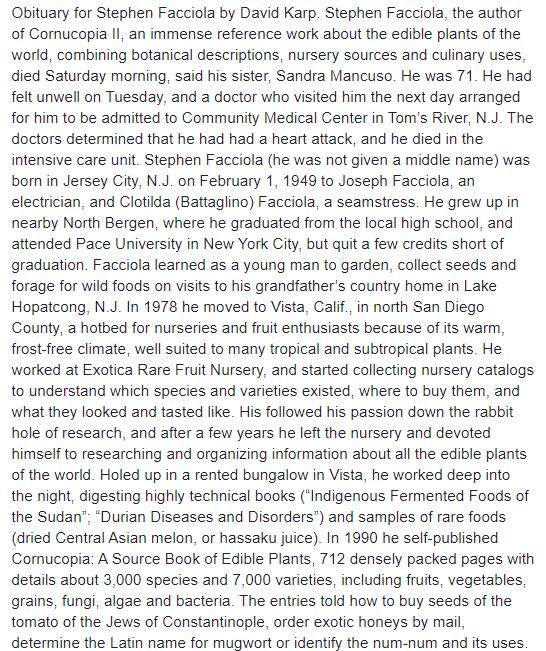

Finally, here are the 3 sample plant profiles that were sendt to me by Facciola in 2018. None of these plants are in Cornucopia II. Our loss is great….let us hope that a team is assembled with proper funding to document the world’s edible plants according to Facciola’s vision while we still can!
2011: “Stephen – Nice to see that readers are using ‘Cornucopia’ to such an extent. I’ve seen some beat up copies but I think yours is the winner. Having developed a format for an illustrated book on all or most of the world’s edible plants, I’m currently not planning a third edition of ‘Cornucopia’. I do have damaged copies of ‘Cornucopia II’ I can send you but the shipping charges would be high. Please send the Hosta article. The Hablitzia article was available for free download. I enjoyed reading the posts on your “Friends of Hablitzia…” group page. Regarding the reddish early-season shoots: what percentage of seedlings have this trait? Also, do plants described as red-stemmed also have red leaves on mature vines? Best regards, Stephen”
2014: “I haven’t made much progress in writing but I have managed to do some traveling: to Holland, Oman, Armenia, Nagorno-Karabakh, Georgia and Uzbekistan.”
2017: “Hi Stephen, congratulations on ‘Around the World in 80 Plants’. There won’t be a ‘Cornucopia III’, I’m working on an ‘Edible Plants of the World’ book which is still a long term project even though it will be an abridged version. Just how abridged depends on time, health and funding. Best, Steve”
Hedgehogs in the garden
2013 was sadly the last time I saw a hedgehog here (see the last picture here)…and there are only 3 reported observations since 2013 in the whole of Malvik Kommune, all found dead (killed in traffic), the last in 2017. There’s still a small population in Trondheim, so there’s a chance they will return. The population collapsed in the 2000s and it’s thought they were impacted by a virus, but many are also killed on roads and lack of habitat (too tidy gardens). As it’s never properly dark here in summer we have been able to photograph them at night and about 3 times have followed courtship and mating! Below are a number of pictures of hedgehogs in the garden over the years.
The first shows mating in the garden in the 1990s (from a slide):
Courtship display on 13th May 2006:
July 2006 by the outhouse door camouflaged sitting on a fibre mat!
5th May 2007
After emerging from hibernation, 15th April 2011:
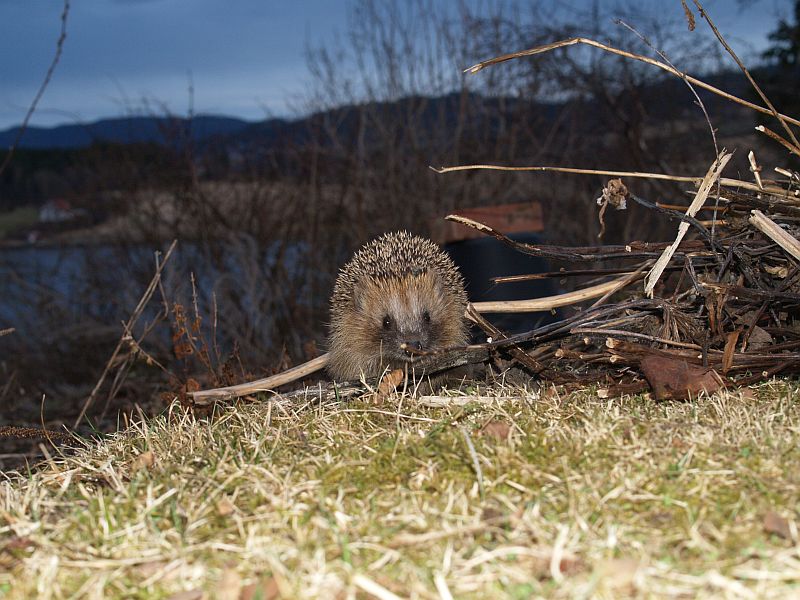

Road casualty (2nd July 2011):
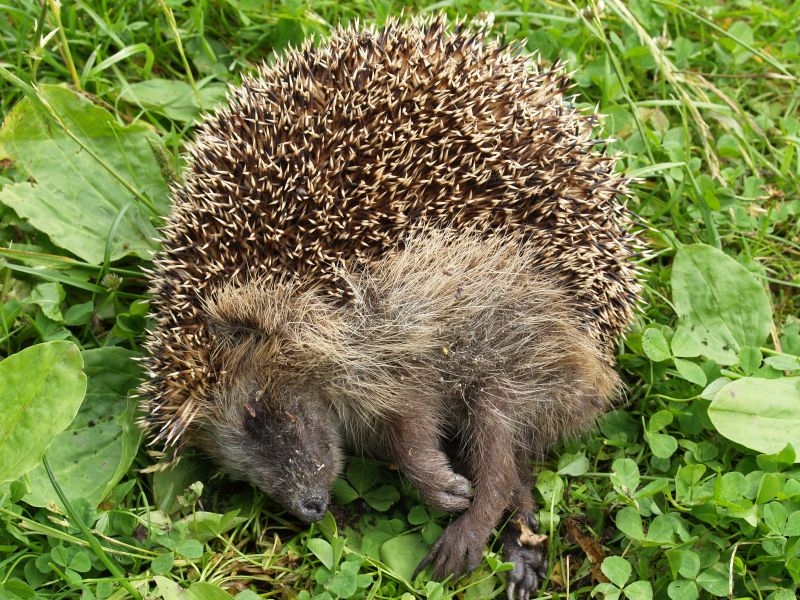
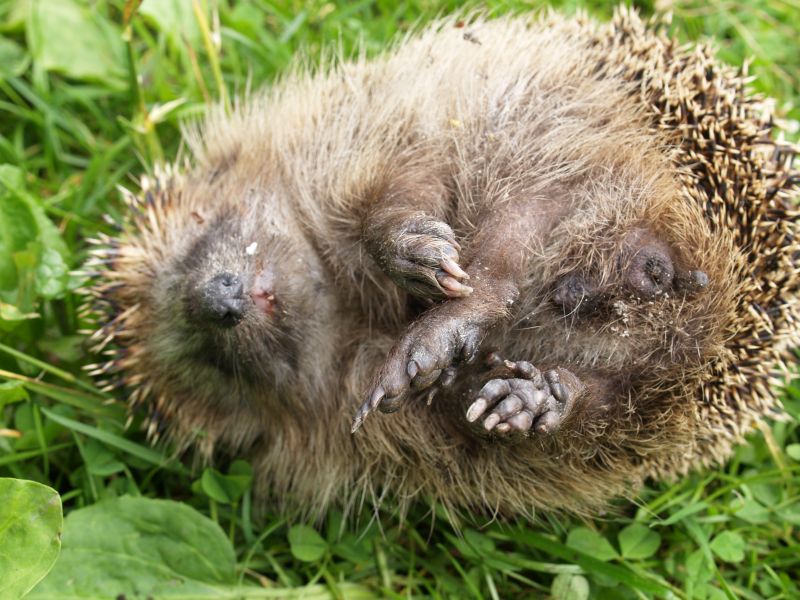

Magpie (skjære) with dead young hedgehog on the neighbour’s deck.

Hedgehog and ground elder (25th July 2012)
This hedgehog seemed to be hunting a worm or similar and was totally oblivious to my presence allowing this series of pictures to be taken on 1st May 2013:
The last sighting in July 2013

Broad Bean Mix
Broad beans (favas / bondebønner) will easily cross with other varieties that are growing nearby. In order to keep a variety pure, you need to isolate them physically. I like to have different varieties with different coloured flowers and bean colour in additon to maintaining early yielding varieties such as Express. I’ve found that I can plant different forms close together and if I save separately beans with different colour and bean size and mark for saving plants with particularly nice flower colours, then I can maintain a good mix in the same place. The flower forms below are all growing within a few metres in the Væres Venner community garden. They were grown from the mix of beans saved at the same place in 2018 (first picture). I don’t offer the different forms as named varieties, but as a mix or composite “Væres Venner Mix” so that others can also select for separate forms! Bumble bees were all over the flowers when I was there!
Alys meets the Modern Monk in the Edible Garden
10 years ago today I had my first celebrity visit, from the UK! On 10th April 2010 I received the following email message entitled Permaveggies:
“I am a garden writer based in Birmingham, England. I came across your work via an interview with you on a website and am very interested in learning more about your garden. I also share a love for unusual edibles that can be used in an ‘ornamental setting’. I suppose my garden has one foot in the forest garden camp and the other in a cottage garden. The greatest majority are edibles (everything from your typical vegetables to the more unusuals) with the rest being useful plants for medicine, feeding the garden or pollinators. I suppose the interesting part is that it’s a typical row terrace garden that’s about 60 ft long- cramped in is one way of looking at its design principles. I’ve written a book about it called the Edible Garden with it in conjunction with a programme on BBC2.
Anyhow I would love to talk more about your work and what you’ve discovered. I look forward to hearing from you.
Yours sincerely
Alys Fowler”
The interview was the one published on my friend Telsing Andrews’ blog, The Veggie Patch Reimagined (see https://veggiepatchreimagined.blogspot.com/2010/02/stephens-edimental-oasis-interview.html).
As part of this BBC series, permaculture had just been featured on 7th April 2010. The BBC crew visited Tim and Maddy Harland’s (my publishers) garden and were bowled over by their mature forest garden full of food and wildlife.
In my reply I jokingly wrote “Stop by next time you’re in the area”!
Little did I know that she would do just that a few months later! It turned out that she was researching her book “The Thrifty Forager” and was “looking for people to interview who boldly eat what others might not think to…”!
Alys’ book The Thrifty Forager was published the year after but my book with Introduction by Alys took another 3 years!
She devotes a whole section to my garden, its plants and The Modern Monk (guess who?) :) In the foreword to my book, there’s a picture of Alys reading my old coverless copy of Cornucopia II in the garden!
Below are 4 albums of pictures taken by Alys’ cameraman Brian Wheeler!
I have fond memories of this visit during a really hot period after the coldest June since the 1960s. The first album are pictures from the garden, the second from a forage and swim in the fjord, then a trip up to a local mountain Vennafjellet , via a second swimming spot, Nevrahølet (we were finished quite quickly with the pictures and interview in the garden due to the wonderful weather) and finally some pictures from Trondheim!
Alys was also a presenter on BBC’s Gardener’s World and writes a gardening column for the Guardian!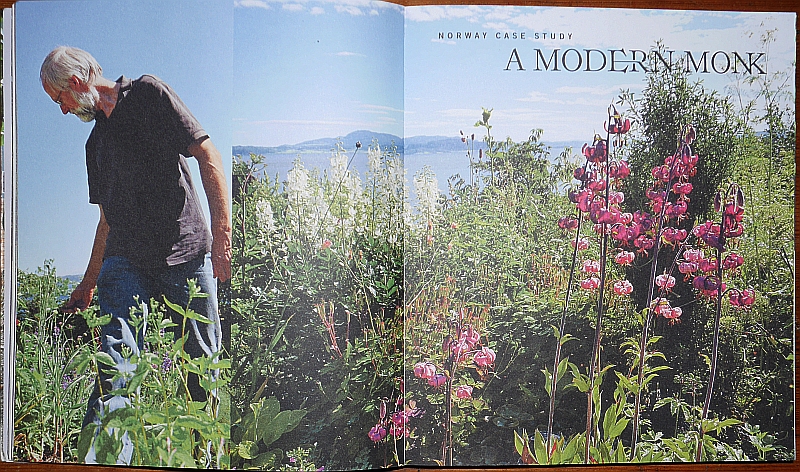
Other blog posts about Alys!
Alys Fowler in the Edible Garden: https://www.edimentals.com/blog/?p=276
Alys’ Pool: https://www.edimentals.com/blog/?p=5572
1. Brian Wheeler’s photographs of The Edible Garden
2. Brian Wheeler’s photographs from a tour of the bay and beach below the house (after her swim, Alys said for the first time that I lived in paradise!)
3. Trip to Vennafjellet via Nevrahølet swimming hole in the eyes of Brian Wheeler
4. Alys Fowler in Trondheim (by Brian Wheeler)
Henry’s Quinoa Harvest
NEW PATH AND A VIDEO OF THE POND
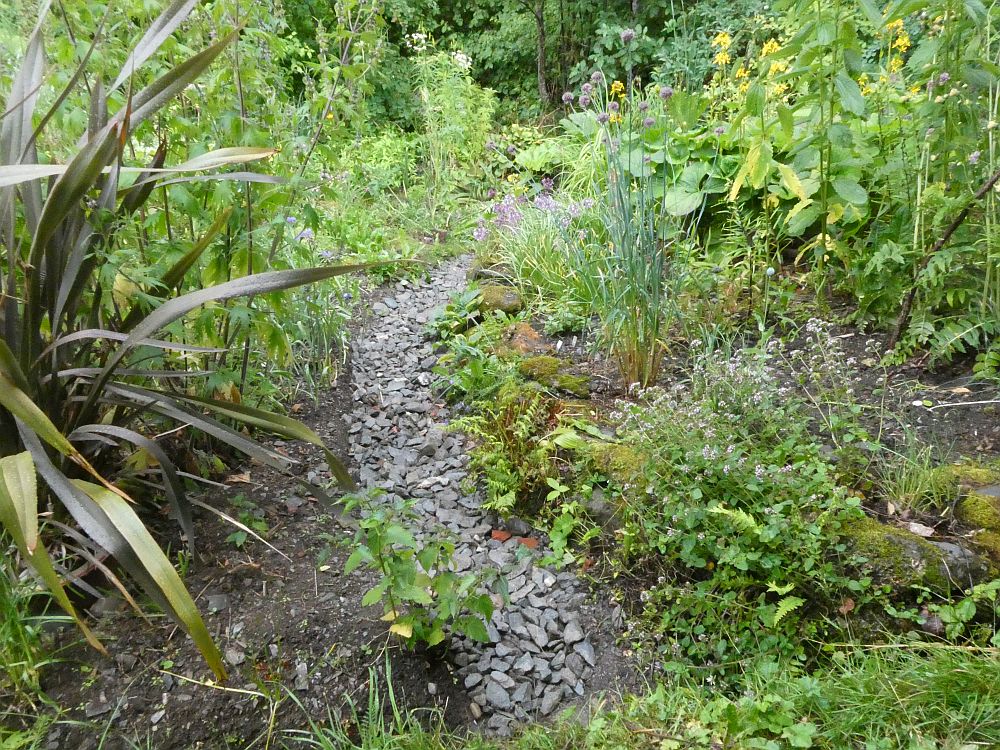

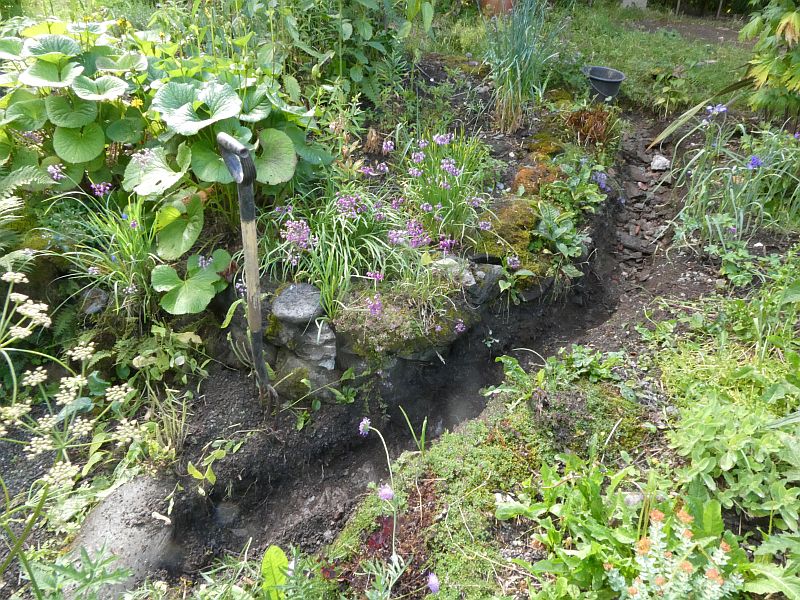


Pond Bed North Upgrade
I’ve been busy planting up a bed that I’ve been renovating. It’s part of a bed I’ve called “Pond Bed North” since I constructed it in the late 80s after felling several birch trees (the previous owners liked even more shade than I do). However, it had become overgrown with unwanted inedibles…
Here’s a video of the bed and the plants and below a picture and hand drawn map of the bed with details of everything I planted for those wanting more details. You’ll see various Japanese edibles, two new Zanthoxylums, Aster scaber (new accessions) and right at the end an exclusive edible, Taraxacum californicum (California dandelion). This information will be added to my master garden Excel sheet in the winter.






